Wow. Exiting a dry fast can be tough. If you want the full healing benefits, you better be ready. This article provides a detailed experience and explanation of how to navigate refeeding after a long dry fast. This is a monster of an article, but one you shouldn't skip if you're serious about your health. I did it. I performed a full Filonov refeed exit and documented it all for you.
I'd like to preface this by acknowledging the absolute beauty of a 30+ year tailored dry fasting protocol developed by Sergey Filonov. If you are in desperate need of help, have the resources and time to fly to a different country, or need someone to perfectly hold your hand, and prepare your meals and massages, then you must look into and book a session with Sergei. Some of our Western coaches are a great intermediary to hold your hands and guide you, but you need to be aware that this world of fasting is also filled with practitioners who strictly follow their mysticism and spirituality. While this may work for them and a few others, it creates a potentially dangerous situation for most other beginners. This is why the dry fasting club is dedicated to opening the doors and creating a more accessible platform for dry fasting beginners. If you would like to support this, please consider subscribing to the website, and setting up a one-on-one chat. Now let's dive into the refeeding protocol. How to refeed after a dry fast is the most important part of the healing process, so make sure to do it justice.
Filonov's 9-day refeed program for exiting an extended dry fast
The 1st day: • 8 am - Drink high-quality hot meltwater, add 1 tablespoon of Bolotov's whey or lactic acid bacteria preparations to the first glass of water. Drink it over the course of fifteen minutes. Do it slowly, sip by sip, so that you make your last sip in the fourteenth minute. Don’t drink a glass of water in ten minutes or less, as it’s very risky. Drink eight glasses of water this way within six to eight hours, and then you can brush your teeth. • 2 pm – Drink dried apricot, prune, and raisin compote - 1000 • 7 pm – Drink vegetable broth (cabbage, carrots, beets, onions, potatoes, dill, parsley) - 200 • 10 pm – Drink herbal Java tea or compote - 200
The 2nd day: • 8 am – Drink herbal Java tea with honey or compote - 200 • 11 am – Eat buckwheat soup – 250; starting on the second day, eat one raw quail egg 3 times a day Eat pollen and royal jelly during the entire period of coming out of a fast (put 1 teaspoon under the tongue on an empty stomach in the morning). • 2 pm – Eat vegetable soup (cabbage, carrots, beets, onions, potatoes, dill, parsley) – 200 • 7 pm – Eat rice soup - 200 • 10 pm – Drink compote and herbal Java tea with honey - 200
The 3rd day: • 8 am – Eat a fresh cabbage salad - 200, drink fermented milk 200 • 2 pm – Eat fish soup (from greenling, salmon, humpback salmon), drink tea, compote, kefir, eat honey • 6 pm – Eat boiled beets, cereals, drink tea, compote, or kefir • 10 pm – Drink herbal tea with honey
The 4th day: • 8 am – Drink fresh juice, eat salads or cereals • 12 am – Eat buckwheat porridge 200, a vegetable salad • 3 pm – Eat a fresh cabbage salad - 100, fish soup, drink fermented milk 100 • 6 pm – Eat vegetable soup - 200, drink fresh juice • 9 pm – Drink fermented milk 200, eat any cereal
The 5th day: • 8 am – Eat oatmeal with dried apricots - 150, drink green tea - 100 • 1 pm – Eat steamed vegetables (carrots, beets, cabbage) - 150, drink fresh juice - 200 • 5 pm – Eat soup (carrots, beets, cabbage, dark bread crackers or bran sticks), 1 apple, drink herbal tea with honey • 9 pm – Drink fermented milk 200, eat fresh fruits
The 6th day: • 8 am – Eat raw grated vegetables or fruits 250 • 1 pm – Eat a vegetable salad and a vegetable soup with a piece of bread or porridge with a teaspoon of oil. Drink fresh juice - 250 • 5 pm – Eat soup (carrots, beets, cabbage, dark bread crackers or bran sticks), 1 apple, drink herbal tea with honey • 9 pm – Drink fermented milk- 200, eat fresh fruits
The 7th day: • 8 am – Eat raw grated vegetables or fruits - 250 • 1 pm – Eat 200g of lean fish cooked in any way, except for frying. Combine it with a green salad. Drink fresh Juice - 200 • 5 pm – Eat borscht - 250, 1 apple, drink herbal tea with honey 200 • 9 pm - Drink fermented milk - 200, eat fresh fruit
The 8th day: • 8 am – Eat fruit, drink herbal tea with honey - 200 • 1 pm – Eat fish baked in foil, a vegetable salad - 200, drink dry red wine half diluted with boiling water - 200 • 5 pm – Eat borscht - 250, 1 apple, drink herbal tea with honey - 200 • 9 pm – Drink fermented milk - 200, eat fresh fruits
The 9th day: • 8 am – Eat raw grated vegetables or fruits - 250 • 1 pm – Eat fish soup, a vegetable salad - 200, drink dry red wine half diluted with boiling water - 200 • 5 pm – Eat borscht 250, 1 apple, drink herbal tea with honey - 200 • 9 pm – Drink fermented milk - 200, eat fresh fruit
Refeeding with Notes and Variations of Filonov’s Protocol
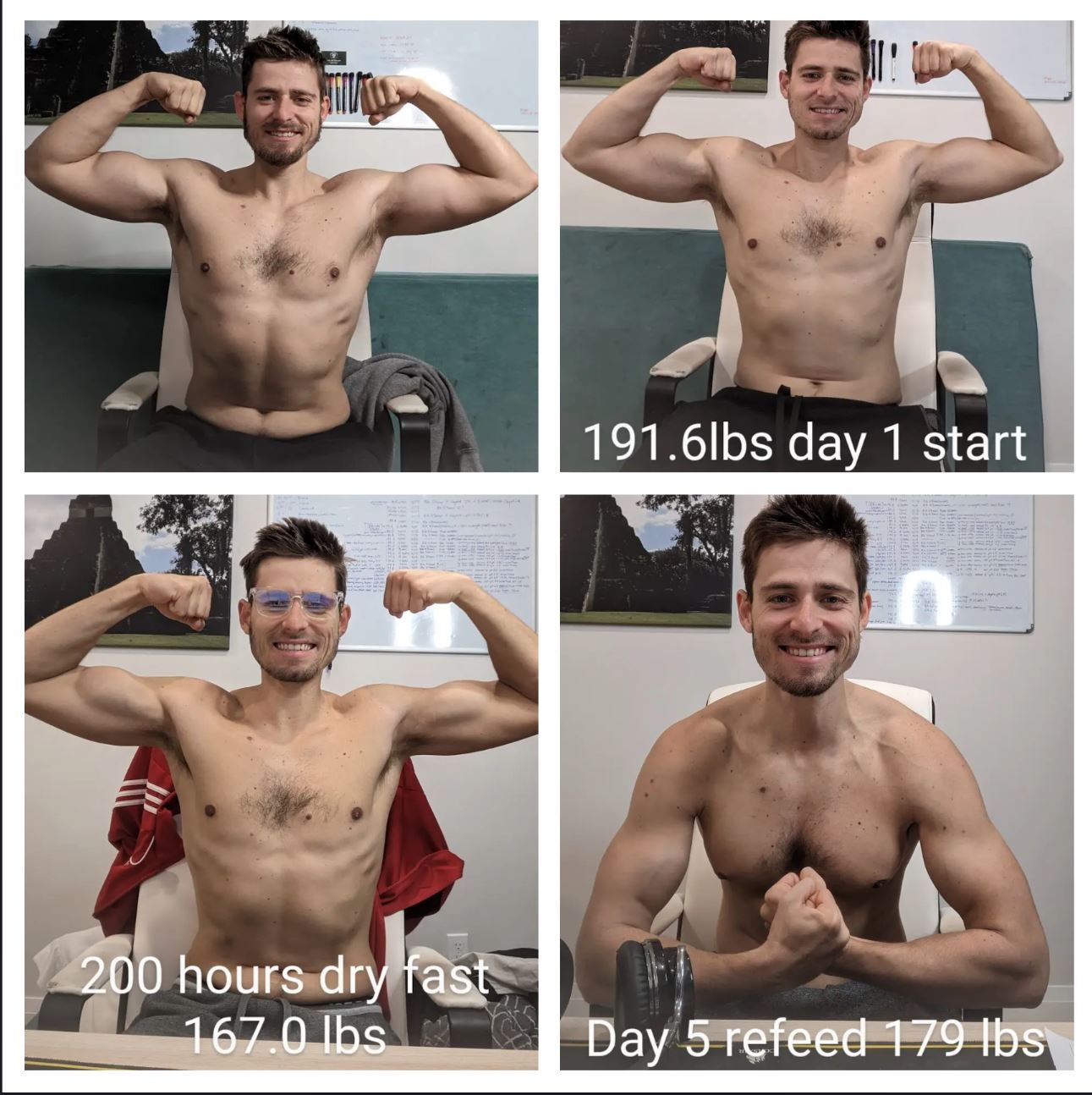
Come out of a fast for as many days as you fast. One day of dry fasting is equivalent to three days of water fasting. Thus, if your dry fasting course lasts for 9 days, you need to come out of it for 30 days or a whole month!
What is meant by this is that the protocol for exiting water fasting is on a 1:1 ratio. Logically if we agree to the 3-1 mentality, we should be exiting a 9-day fast with 27 days of refeeding. What is meant by refeeding here, is that you continue to eat controlled meal portions. Filinov’s guide goes to day 9 of refeeding and builds a platform for you to continue off of. As you navigate your hunger and cravings, make sure you perform portion control and continue eating whole healthy foods. If you follow my guides, you can keep weight off, and introduce a better level of healing. Don't follow the guide and you can easily gain back more weight than when you started, and disrupt the healing that occurs in the first weeks.
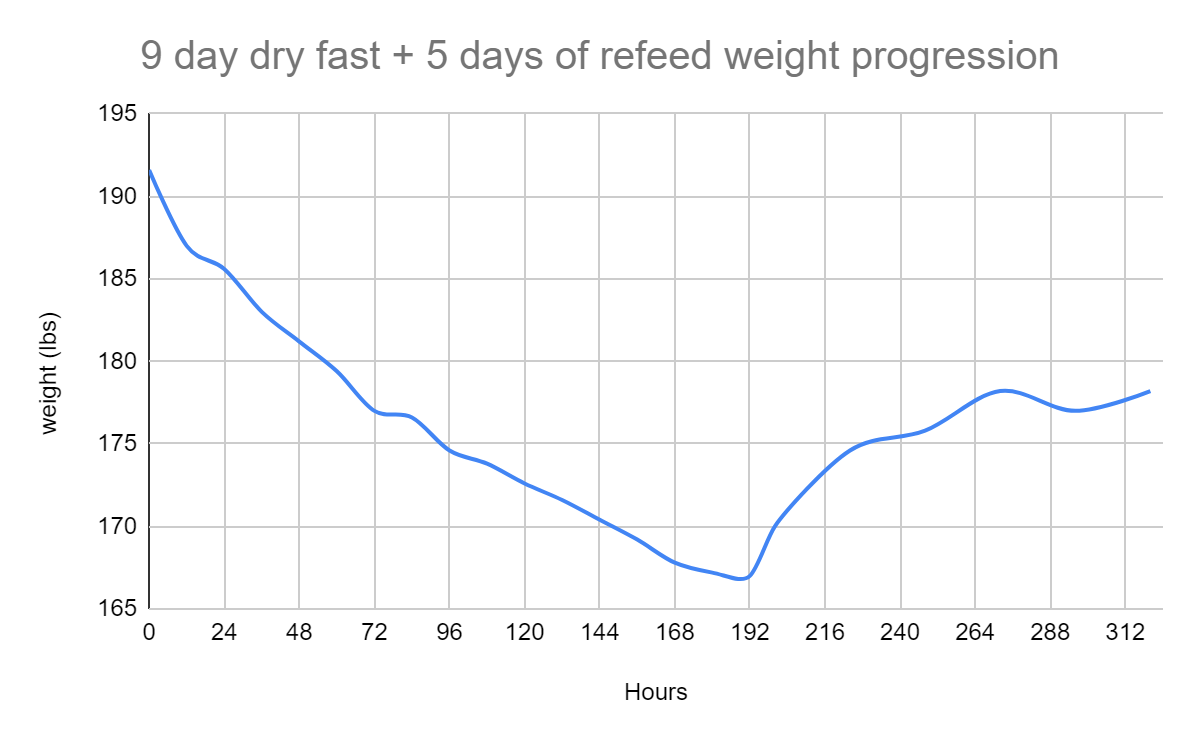
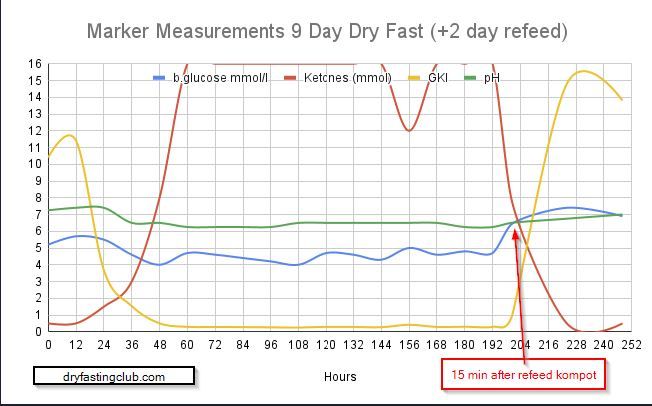
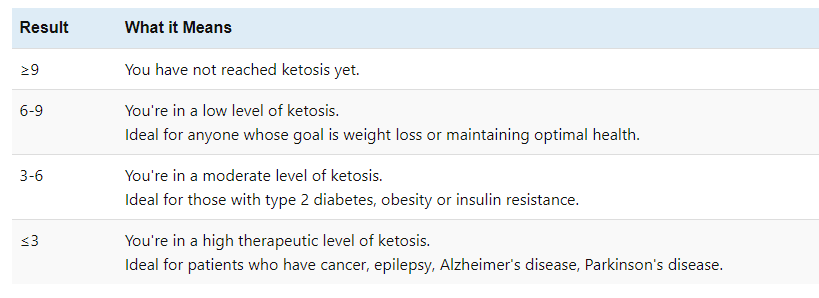
First and foremost, drink water. It’s best to use dew, spring, or meltwater. The way you drink matters: you must add three capsules of "LINEX" or, better yet, Bolotov's whey (serum) to the first glass of water. Drink it over the course of fifteen minutes. Most importantly, do it slowly, sip by sip, so that you make your last sip in the fourteenth minute. Don’t drink a glass of water in ten minutes or less, as it’s very risky. The water consumption systems may not cope with it, so you may faint or face other harsh consequences. Drink eight glasses of water this way within six-eight hours, and then you can brush your teeth. In very rare cases, the first sip of water can cause nausea. In this case, hold every sip of water in the mouth, mixing it with saliva, and then swallow it 20-30 seconds later.
Current stats #refeed #dryfast pic.twitter.com/B0akZtbGHk
— Dry Fasting Club (@DryFastingClub) April 24, 2023
As you exit the fast, you have to find the perfect exit point. This is critical and why you can benefit from using data. There are a few things that need to be considered.
- What stage am I on?
- Am I currently fighting with exacerbated symptoms?
- What is my urine output look like?
- What is my blood glucose level at?
- What is my last 24-hour weight differential?
- Will I manage 6-8 hours of water hydration if I start now? (I have a specific methodology and hacking it to explain)
- Have my goals been met?
[These will be explained in my post: How to decide on the perfect exit strategy for a dry fast]
Step 1: Meltwater and Breaking the Fast
Breaking the dry fast is an important step. Since it’s the first step, some people will argue it’s the most important step. I disagree simply because it’s a uniform step for all dry fasting, regardless of the “fasters” conditions and situation. Learning to do this correctly is key, and there are many different points to follow
Day 1: 8 am - Drink high-quality hot meltwater, and add 1 tablespoon of Bolotov's whey or lactic acid bacteria preparations to the first glass of water. Drink it over the course of fifteen minutes. Do it slowly, sip by sip, so that you make your last sip in the fourteenth minute. Don’t drink a glass of water in ten minutes or less, as it’s very risky. Drink eight glasses of water this way within six-eight hours, and then you can brush your teeth
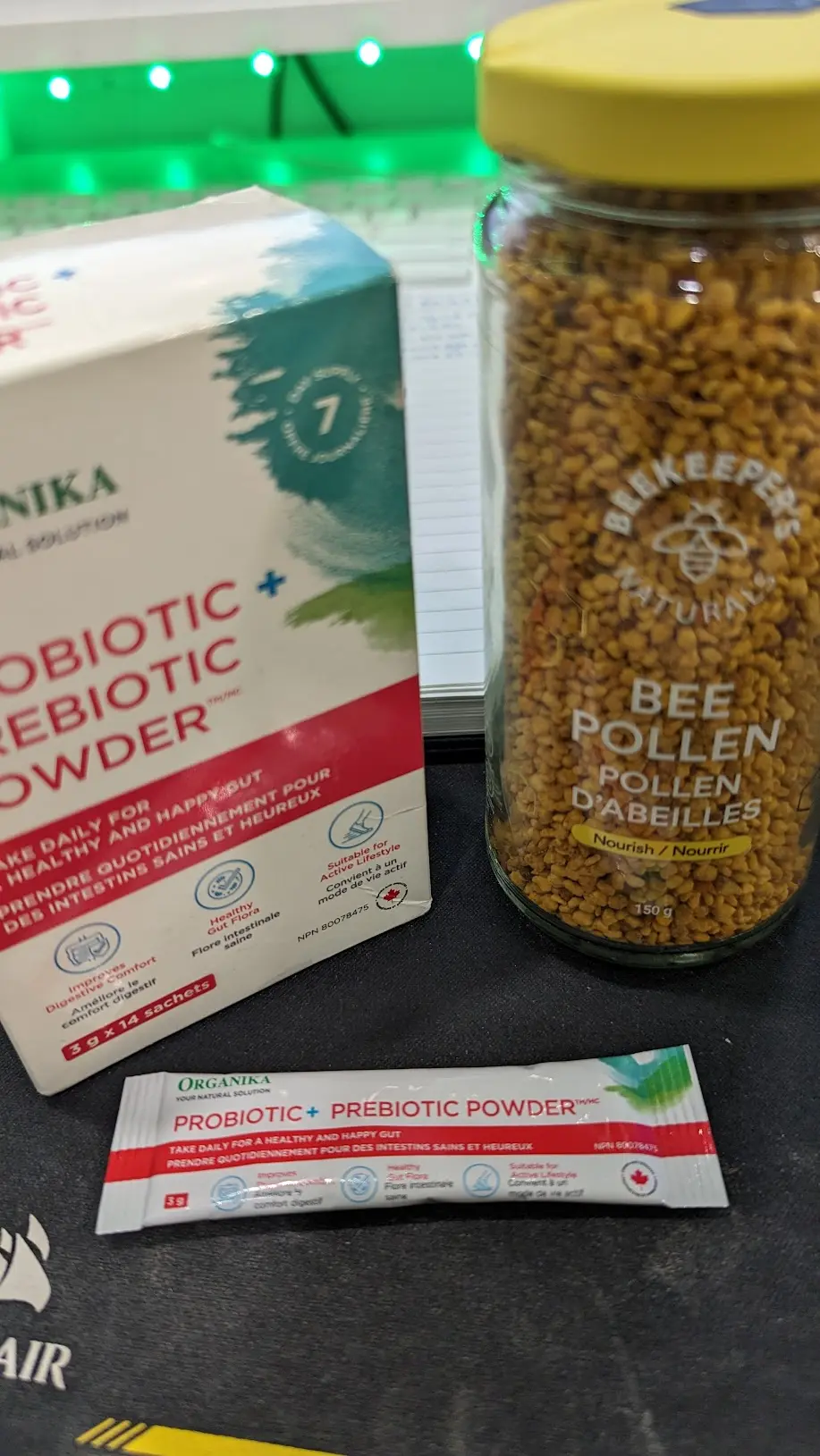
The second method. Heat a small amount of liquid to 94-96C. Water shouldn’t boil, but only start bubbling. At this point, remove the pan and cool it down rapidly, then freeze and melt the water. The meltwater prepared this way goes through all the phases of its circulation in nature: evaporating, cooling, freezing, and melting. This kind of water is especially useful as it has tremendous internal energy potential.
Since I’ve now decided on a time to exit the fast. I will drink 2 cups of meltwater within 1 hour, the first cup will be drank slowly. Showing restraint here is important. What can happen? Nausea and even fainting. I mixed it with Webbers 8 strain probiotics, followed by an Organika sachet blend that I mixed into the water. The sachet blend contains both pre and probiotics which are important to help establish the first gut bacteria. If you want more detailed information on the brand, the amount used, and other info, make sure you check out the dry fasting refeed protocols, as well as the preparation protocols. We are not adding kefir this early because of a few reasons. We are still waking up the gallbladder and bile production so that we will avoid fat as much as possible. It is for this reason that many people struggle when adding butter, or other fat-incorporated foods. Kefir is in its own category and can be used during different timelines than say, raw milk.
Kefir properties:
- Probiotic Benefits: Revitalizing the Gut Microbiome - One of the best sources of probiotics you can purchase or make at home, especially to revitalize the gut microbiome that has suffered during an extended fast. This fermented milk drink contains a variety of beneficial bacteria and yeast, which help restore balance to your gut. If dairy isn't suitable for you, there's an alternative option called water kefir, a non-dairy fermented beverage that also offers similar probiotic benefits, although it has not been well tested with coming off of extended dry fasting, so bear that in mind.
- Nutrient-rich: The Advantages of Culturing on Whole-fat Raw Milk - Kefir is full of nutrients, especially when it is cultured on whole-fat raw milk. This process results in a more nutrient-dense beverage, providing vitamins, minerals, and essential amino acids. For those who prefer non-dairy options, coconut milk or almond milk can be used to make kefir, but be aware that the nutrient profile may vary.
- Pre-digested protein and fat. A unique type of nutrient and therefore can be taken earlier during your refeed - Kefir contains pre-digested protein and fat, making it a unique type of nutrient source. The fermentation process breaks down the protein and fat, making them easier for the body to absorb and utilize. This characteristic allows kefir to be consumed earlier in the refeed cycle after you've broken your fast to provide easily digestible nutrients.
Click here for the place where I bought my milk kefir grains. They are Canadian local and provide high-quality grains.
Common symptoms after breaking a fast
Diarrhea after a dry fast
Diarrhea as the water content wakes up the intestines. This is dependent on how well you cleaned them prior to the fast. There are various levels of necessary cleanses depending on how long you are going and what your diet was like before the fast.
Constipation after breaking a dry fast
Constipation is a common symptom for a few days as your body wakes up. Sometimes you may experience quick diarrhea upon breaking the fast, which then turns into a few days of constipation as the body starts absorbing the water and filling every cell back up. Filonov writes:
Quite common, especially in beginners. In the absence of natural defecation for more than 2–3 days, an enema should be performed. In any case, an enema is recommended to beginners on the second and third ay of withdrawal from fasting, for the purpose of getting rid of undigested food debris and improving well-being. You can take a laxative mix, made of the following ingredients: dried apricots, figs, prunes, raisins – 100 grams of each. Wash everything, grind, add 100 grams of honey, 2 tablespoons of vegetable oil. Take 2 tablespoons before bed for 4 days. Bran is also helpful.
Here he recommends a laxative mix or an enema. Most beginners to dry fasting are not comfortable with performing enemas. In this case, you should become quite knowledgeable about laxative mixes and intestinal cleansing. The main reason you may be in dire need of an enema is if you have not cleansed properly prior to the fast and your body was unable to expel the impacted stool when you broke the fast. Sometimes you may still have intestinal pain because of this that continues even after you start drinking water.
Gastrointestinal health is crucial for overall well-being. In the pre- and post-fasting phases, magnesium citrate can be a valuable tool for promoting gut health. By attracting water to the colon, it softens stools and encourages bowel movements. This gentle cleansing process not…
— Dry Fasting Club (@DryFastingClub) April 29, 2023
My recommendation in my Filinov variation protocol is to make sure that you top up on Magnesium (Citrate), which both serves as a mild laxative and a source of magnesium. If urgent, then food-grade Epsom salt (Magnesium Sulfate) should be on hand. We already know that magnesium deficiency is one of the biggest deficiencies in the body after a dry fast. There are a few ways to rectify this as well as provide a laxative effect. For more details scroll down to the section about minerals and laxatives.
Exhaustion after a dry fast
Another possible step is exhaustion. This is common and can be managed by choosing the appropriate time to break the fast, and by monitoring blood glucose levels to stay in a certain range. This requires monitoring and having a strategy for consumption. Filonov writes:
Weakness, dizziness, fainting. Occur in the first 3-5 days of the withdrawal from fasting. They are associated with the premature expansion of the mode of movement. Due to a seeming surge of strength, you cannot evaluate your physical abilities, which leads to bouts of weakness, dizziness, and up to fainting. For prevention during fasting withdrawal, you have to observe a stricter regimen than during the fast itself. Get sufficient rest, do not take long walks, do not perform heavy physical work, do not overstrain yourself, and only experienced fasters who are well aware of the characteristics of their bodies can lead a rather active lifestyle. After all, physical activity during the withdrawal contributes to the fastest switch of the body to a normal nutrition regime.
Feeling exhausted after eating a meal, particularly after not eating for a long time, can be attributed to fluctuations in blood glucose levels. Normally, when you eat a meal your body breaks down the carbs into glucose and spikes your blood sugar. After a fast, your pancreas is very sensitive and needs time to wake up. It releases insulin to try to absorb glucose for energy and stabilize blood sugar levels. Too much sugar and your pancreas won't keep up and you can burn it out. It will release a bunch of insulin and cause an energy crash. In normal times this is the effect that causes a food coma or sugar crash. This is why I continuously stress how important it is to use the sugar taste test to dilute meals and drinks as best as possible.
Exiting a fast in the middle of an exacerbation
No urine after a dry fast
Not being able to urinate. This occurs because the body is waking up, and filling shut down areas and organs with the supplied water. As you continue to hydrate your weight will go up and eventually, you will urinate (as long as you are avoiding sodium). During the fast, your urine level stabilizes as your body burns fat and protein for metabolic water. Once that process is disturbed, specifically when you finally break the fast with water. Your body stops a lot of the processes and now focuses on rehydration. This is why it is key to slowly but consistently keep drinking only high-quality water before you decide to eat anything else.
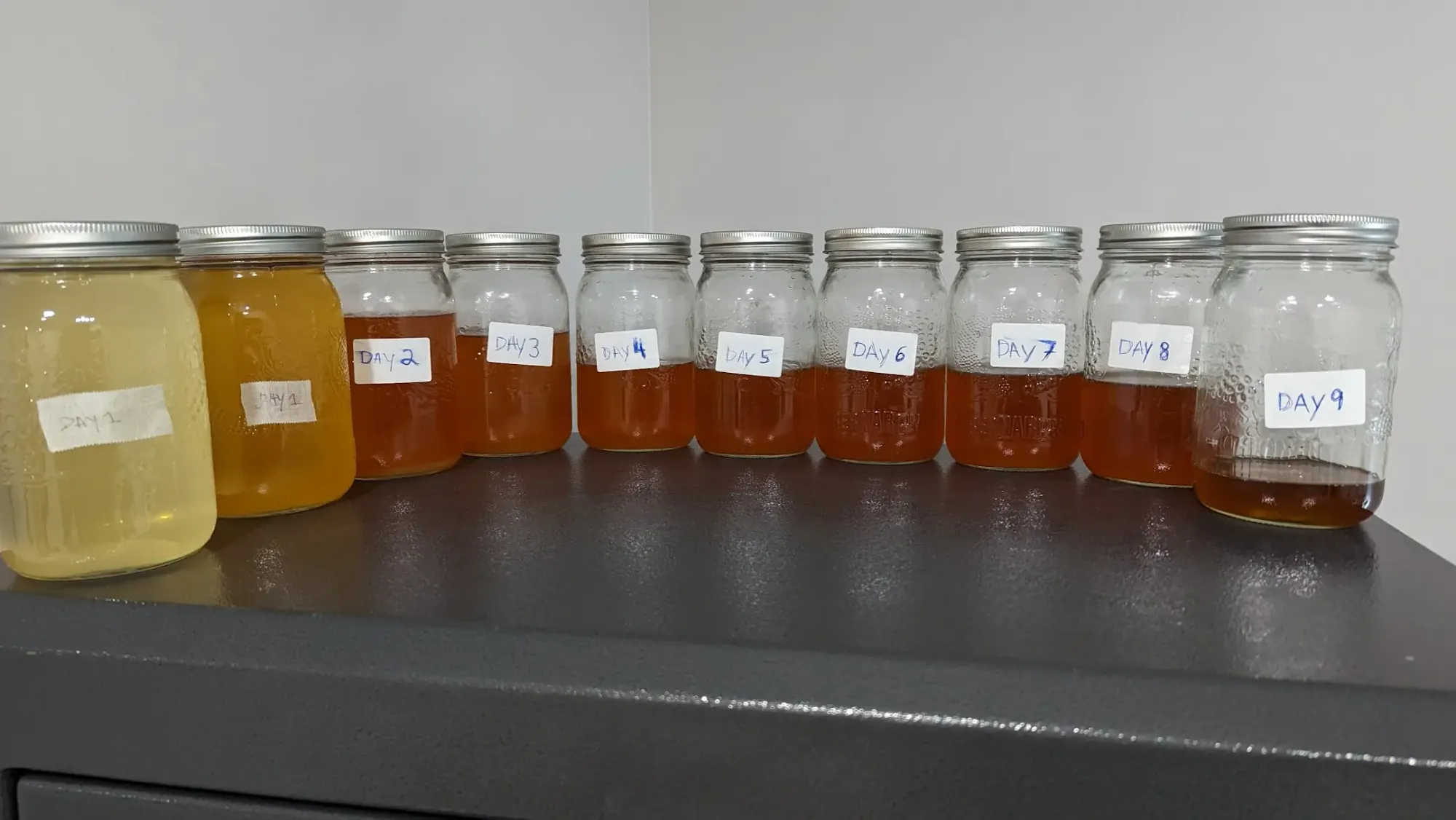
The body really does hold on to sodium and other electrolytes really well once it stabilizes during a dry fast. However, Potassium and Magnesium excretion remains stable. What does this mean? The longer you dry fast, the more you will lose Potassium and Magnesium from your bone storage at a consistent rate, while sodium will get retained more and more. This is why after the fast every sodium atom will be held on to for dear life, as the mechanisms for sodium retention are at their peak. Filonov writes:
A rather frequent complication. It occurs due to the fact that during fasting the body expends potassium and the intake of salty foods in the early stages of recovery contributes to the accumulation of sodium, and as a result, of water, in the cells. Although it can also be observed even with proper withdrawal from fasting after long periods of time and in beginners. Usually, it manifests through rapid weight gain. The amount of urine is reduced, and swelling of the face and the legs may appear. If such symptoms occur, salty foods and salt-containing foods should be excluded from the diet. Attempt to eat nothing on this day, take 3 tablespoons of sorbents diluted in one glass of water, 4 times a day every three hours, then take 40 g of Epsom salt diluted in one glass of water, and then fast with water for two days. It is advisable to take a bath, a sauna, or a hot bath on the days of fasting - then excess sodium and water are released. Potassium preparations, such as Panangin or Asparkam, in the dosage of 1 tablet 2-3 times a day over the course of 2-5 days, are very useful. These drugs contain magnesium and potassium, which are absolutely safe.
There are studies that show a correlation between ammonia increase and sodium retention in the body during fasting. When ammonium levels increased, the body conserved sodium, using ammonium instead. We know that the body uses ammonia to counterbalance the ketoacid salts during heavy ketosis.
Pain in the pancreas.
Pain in the pancreas. Arguably the most important organ when coming off the dry fast. I would rank it even higher than keeping track of the kidneys. Considering that the kidneys were running during the full fast, metabolic water was constantly being created, excreted, and monitored.
The fatigue of the internal organs is greatly alleviated with one-day fasts. There are many cases where a mild case of diabetes is cured only due to the pancreas getting a couple of days of rest during the fast. After dry fasting, you should start eating in small portions. The extended time of withdrawing from the dry fast is associated with the need for a gradual increase in the burden on the pancreas, which was inactive during fasting and must now be carefully put into operation.
Before you even start the next step you can expect your blood to be flowing a little quicker. This is viewed when you prick yourself for the blood glucose test. This is also a reason why you may get colder during this time, as your body is not producing enough heat anymore and the blood is not as thick to provide the dry fasting heat.
Worsening of symptoms after breaking a dry fast
If during the fast your disease is exacerbated, it is desirable to continue the fast until the symptoms disappear. If this is impossible, symptoms may persist during the withdrawal, thus, you have to conduct withdrawal according to the usual scheme and not hurry with the premature intake of heavy food. Homeopathic medicines may be used for treatment. After a week of withdrawal, if the symptoms persist, careful use of medications is allowed. These are the main troubles that you can experience during a withdrawal from the fast. The more first-hand experience you have with fasting, the fewer unpleasant symptoms will be present. Everyone needs to know themselves well, and then everything will work out as you want. The main thing is not to rush, but to constantly build up your own experience.
Worsening symptoms are very common. Filonov and others push you to try and continue a fast until symptoms abate. What this means is that if you are having a sore throat, a sudden headache, or pain, you are encouraged to try to push through it. Because if you push through it, you are able to exit the fast much more gently and feel better. However, what they don't talk about is the precursors to the pain. To what level have you cleansed before the fast? What are your current kidney filtration level, diet, and fasting experience? All of these play a role in knowing when you can push and when you need to withdraw. The reason Filonov says that the more first-hand experience you have with fasting, the fewer symptoms you'll have is because as you progress through fasting, you are continuously healing your cells, metabolic pathways, and organs.
The more you fast the cleaner you are. The cleaner you are, the easier it is to fast. If you know yourself to have gone through certain days easily, and you suddenly feel a certain uncomfortableness you are able to judge if it is the acidotic crisis or if it is an organ pain that needs to be addressed. Very common symptoms of the acidotic crisis are headaches, fatigue, depression, and anger. Your pH drops as your body goes into a bit of a shock. I mean, it almost never gets into such high ketosis, the fat is burning at volcanic levels, free fatty acids are acidifying your blood and your body can't keep up. Knowing this, you know that this shock stimulates your body into going into a new level of homeostasis. As long as you don't start the fast in a deficient state, your body WILL bring back balance. With that balance, it will unlock deeper levels of autophagy, lysosome activity, hyperosmotic microtubule dependant autophagasomal clusters, and chaperone-mediated autophagy. Read about the acidotic crisis here.
Back to worsening symptoms after a dry fast. Yes, it's very common for beginners. You do not have a fasting muscle developed, and your body is detoxing. You have not deeply detoxed the body. Your cellular dead water has never been pulled on so powerfully before. Your toxins and viruses have had an easy job of sitting pretty, and now you are tugging at them. No wonder you feel worse. This is part of the process. As long as you have followed steps properly, safely prepared for the fast, and have conducted the fast cautiously without overexertion (both physically and mentally). Then you can safely pass the first acidotic crisis that occurs around day 3. If you exit the fast and feel bad, know that this is part of the detox and it means that you also need to very gently exit. Follow a refeeding protocol that is gentle and takes a while to ramp up. Stay away from heavy food to give your immune system the ability to focus on detoxification and not on digestion.
Step 2: Drinking fruit Kompot
Day 1: 2 pm – Drink dried apricot, prune, and raisin compote - 1000
Keep drinking water as thirst dictates. Monitor the levels. There’s a reason that water is the supplement in between meals. Timing is very important. If you think you can outsmart it by drinking small amounts but consistently, you start treading on dangerous waters. You want to drink the 1000ml of fruit Kompt within the allotted 1 hour time frame. Timing this is important because you don’t want to continuously put a burden on the pancreas to secrete insulin. You need to mimic a meal and then let it settle back down as you drink water in the gap.
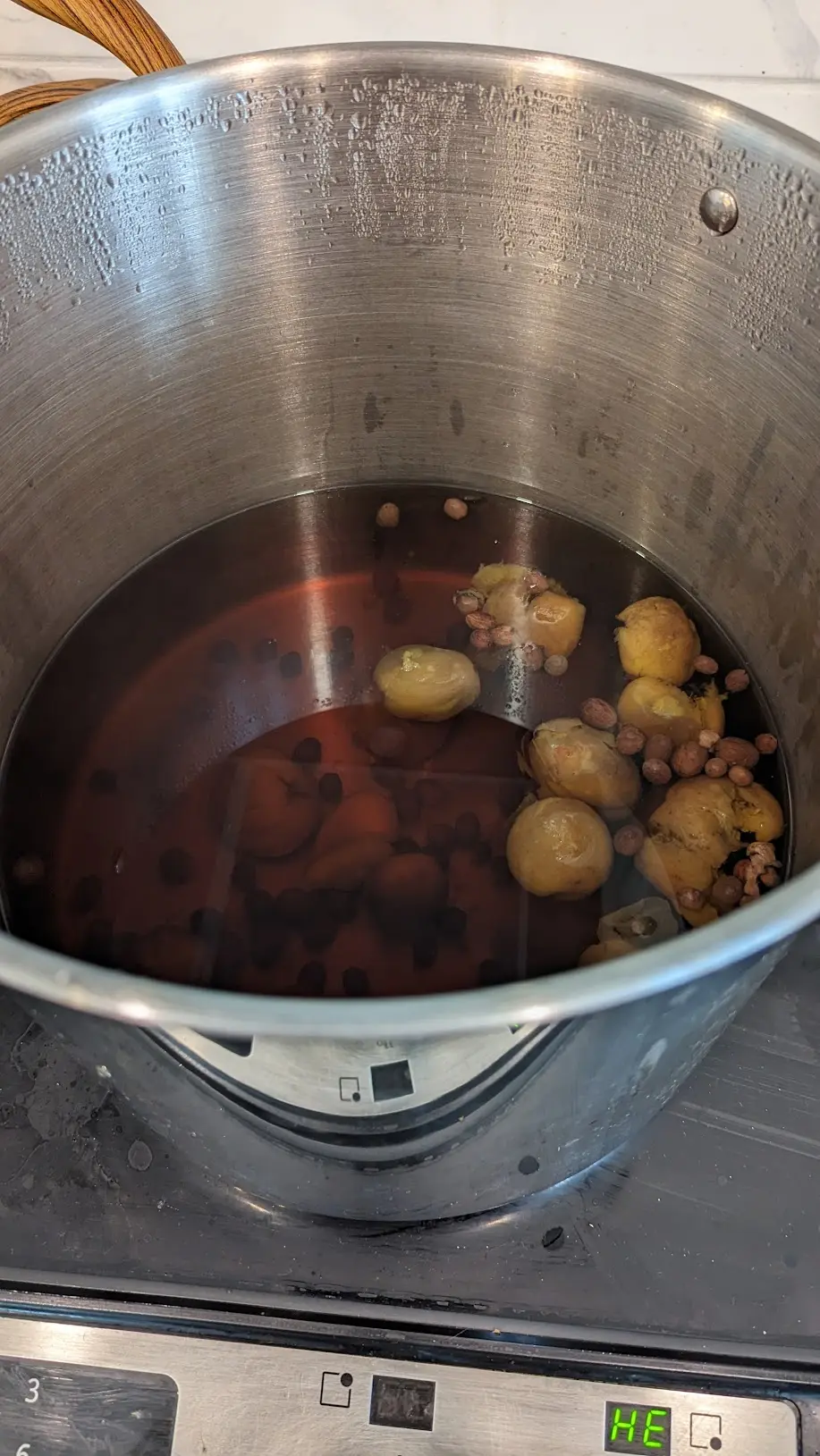
2 pm – Drink dried apricot, prune, and raisin compote - 1000
This is where we are guided to drink approximately 6 hours after having had the meltwater. You can continue to drink meltwater throughout the day, but it can be time-consuming, so switching to high-quality spring water works.
Force yourself to balance the sweetness levels. There’s no need to have too much sugar in what you are eating or drinking, especially after such a long dry fast. The priority is still to hydrate but also to introduce small bursts of carbohydrates to wake up the pancreas. If you are feeling a sensation of sweetness on the tongue, that is good enough. The priority from this is the micronutrients and minerals that can be gotten from the fruit, as well as hydration.
At 12 pm you need to drink warm protein broth (as much as you want), fish broth, without vegetables, well-cooked, without salt or bread. Broth can be cooked with spices (but don’t eat the spices).
I modify the refeed to incorporate some protein broth. I had been doing this naturally even before this guide was added to the exiting of a 4-5 day dry fast protocol. I believe this is a good way to substitute some hydration. Instead of drinking 1L of compote. I would dilute it a little bit and drink 500mL of Kompot and 500mL of bone broth. Dilute the bone broth to a 2x ratio. You will need strategies to stay busy during refeeding so that you don’t overeat. Look up my refeeding protocol for bone broth recipes, where to buy, and how to season it. A little more information on bone broth is detailed below under 'Phosphate after dry fasting'.
Avoiding too much sugar after a dry fast
Oral Thrush. Keep sugar low, too much honey… stop. Try to avoid it, you are already taking in pollen (carbs) and vegetable soup which provides additional carbs. Kefir provides carbs. Carbs are the easiest to digest, so it makes sense to start with them but must be balanced with fiber. This is why juicing too early with high glycemic fruits and vegetables should be avoided. This is not talked about in Filonovs protocol enough.
Fiber plays an essential role in balancing glucose loads in the body through several mechanisms:
- Slowing digestion: Fiber, especially soluble fiber, forms a gel-like substance in the stomach when mixed with water. This slows down the gastric emptying process, leading to a more gradual absorption of glucose from the food into the bloodstream. As a result, there is a slower and steadier rise in blood sugar levels rather than a sudden spike. Fiber also performs competitive inhibition, by binding to the active site of alpha-amylase.
- Modulating carbohydrate digestion: Fiber can interfere with the breakdown of carbohydrates by inhibiting the activity of digestive enzymes, such as alpha-amylase, that are responsible for breaking down complex carbohydrates into simple sugars. This further contributes to a slower release of glucose into the bloodstream.
- Enhancing insulin sensitivity: The fermentation of soluble fiber in the large intestine by gut bacteria produces short-chain fatty acids (SCFAs), such as acetate, propionate, and butyrate. These SCFAs have been shown to enhance insulin sensitivity in peripheral tissues, helping the body utilize glucose more efficiently and maintain better blood sugar control. Think of hydroxybutyrate, as a ketone body, and its effects during fasting.
- Promoting satiety: Fiber-rich foods tend to be more filling and take longer to eat, which can help control overall food intake and prevent overeating. Overeating is one of the biggest mistakes that can be done, and unfortunately, it's one of the most common mistakes. Consuming fewer calories and maintaining a healthy body weight can also contribute to better glucose metabolism and insulin sensitivity.
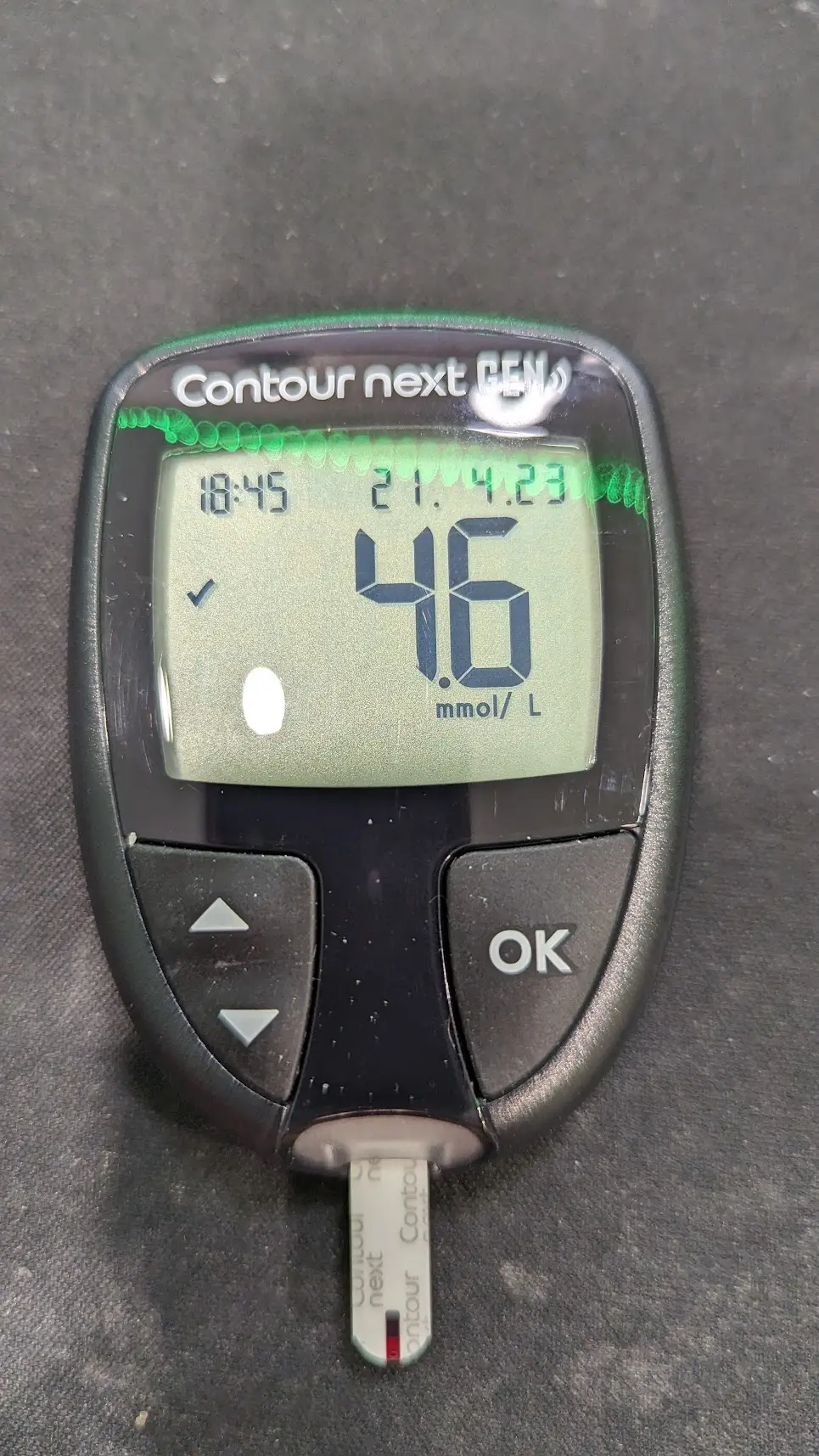
Step 3: Take a Shower
You will want to take a shower, especially if you did a hard dry fast. This is the time. But also the time to take precautions.
Drinking water can be combined with taking a shower. After a shower, it is good to pour cold water over yourself, and then take a warm bath (not hot) with infusions of herbs (no longer than 8 minutes). Along with the washing, you must continue to drink water until 12 o'clock.
You need to prepare an environment that is warm for you. Using cold water can stimulate a lot of benefits, but you need to quickly follow it up with warm water because your body is very frail at this time. A good strategy is to heat up the washroom beforehand if possible. You can also have a towel ready and don’t forget to blow dry your hair. If you don’t blow dry your hair and go outside you can quickly get sick.
When coming out of a fast, you need to stay away from drafts and cold weather, especially during the first days. This is when the immune system is reset to neutralize food and water, so the body is weakened. When the body is reset, the immunity will be even stronger than it was prior to the fast.
If you can time the shower with a hot broth afterward that is perfection. It’s much easier to drink hot broth than hot water or hot kompot. The broth will not spike your insulin levels like kompot so it’s a good in-between if you need to fit something in between the kompot drink and the vegetable soup broth coming up 5 hours after the Kompot. It’s also a good time to get in a little more broth because soon you will not be enjoying the broth without salt. But for now, enjoy the hot broth, warm your body up, deliver the protein, and season only with potassium chloride. Remember to dilute the broth, as the fat content can be too much for your pancreas and gallbladder. The same reason the kompot must be diluted, you don't want to spike carbs or fat. If you are using dehydrated bone broth powder, it automatically has very low fat content, and that is a great option.
What to do during this downtime in between the Kompot and Vegetable soup broth time? Feel free to have a cup of beef bone broth if necessary, otherwise stay busy. Listen to stem cell regenerative Hz frequencies(50-150Hz) OR negative energy release Hz frequencies (396Hz). Dilute the bone broth if it is a homemade naturally fatty broth. You don't want to overload your pancreas with all that fat. If you have some organic bone broth powder, it is usually devoid of fat, so you can safely drink that as an alternative. Do not salt!
Step 4: Vegetable Soup 1 Cup.
Day 1: 7 pm – Drink vegetable broth (cabbage, carrots, beets, onions, potatoes, dill, parsley) - 200
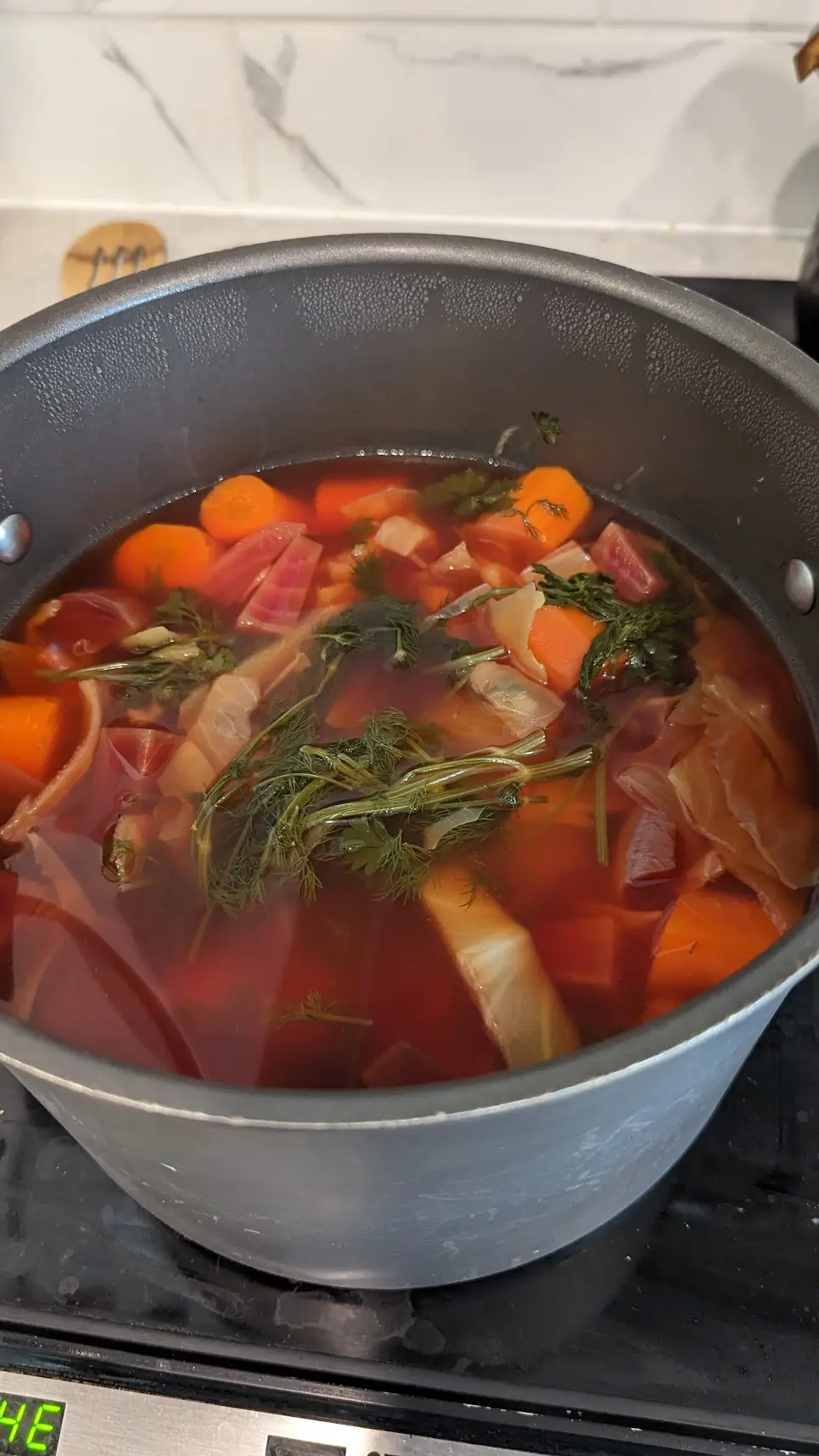
Laxatives, Minerals, and Electrolytes after a dry fast
I use Potassium and Magnesium a lot in both my protocols for refeeding and for preparation. It’s good that Filonov has caught on and has also started to recommend it.
When it comes to avoiding salt, so that no edema/urinary retention occurs, Filonov writes:
If such symptoms occur, salty foods and salt-containing foods should be excluded from the diet. Attempt to eat nothing on this day, take 3 tablespoons of sorbents diluted in one glass of water, 4 times a day every three hours, then take 40 g of Epsom salt diluted in one glass of water, and then fast with water for two days. It is advisable to take a bath, a sauna or a hot bath on the days of fasting - then excess sodium and water are released. Potassium preparations, such as Panangin or Asparkam, in the dosage of 1 tablet 2-3 times a day over the course of 2-5 days, are very useful. These drugs contain magnesium and potassium, which are absolutely safe.
I love how Potassium and Magnesium are mentioned. Filonov does not really use many powders during the refeed, and this makes sense, as nothing is better for the body than minerals from whole foods. Nature has designed them in proportions with other macro and micronutrients, and we've only recently tried to harness their power by creating extracts. When the body is waking up, try to limit the number of powders and extracts you take. If you are not suffering any adverse reactions such as impacted bowels, pain, edema, or kidney pain, then you can follow my advice of using Magnesium Citrate mixes to hydrate the intestines and colon, while also building back up your magnesium stores in the body.
Magnesium is important after a dry fast
Magnesium is an effective laxative because it helps to relax the muscles in the intestines, allowing for smoother bowel movements. It also attracts water into the colon, which softens the stool, making it easier to pass. The mechanism behind magnesium attracting water into the colon is osmosis. When ingested, these magnesium compounds pass through the stomach and small intestine mostly intact, reaching the colon, activating the osmotic effect that pulls in water.
Magnesium sulfate, also known as Epsom salt, can be more potent and may cause more side effects like abdominal cramping and discomfort. Magnesium sulfate is not as well absorbed by the body compared to magnesium citrate due to differences in its chemical structures and solubility. So the trade-off is more of a laxative effect, but less magnesium absorption. Magnesium sulfate is used very commonly for intestinal cleansing. This is important to remember. You should try to avoid intestinal cleansing after a fast. This is when your body is rebuilding, and a cleanse like that disrupts the rebuilding of the gut microbiome and makes you lose electrolytes when you're already in a deficient state. Keep laxatives and cleansing mostly to the preparation stages.
A mix of magnesium citrate in low doses is ideal because it both provides a very mild laxative effect, which allows your stool to move better, and it is an absorbable form. I would do (and I provide this in the refeed protocol), a mix of magnesium citrate and magnesium bis-glycinate (glycinate), because they are both very absorbable, you get a lowered laxative effect since its now 50-50 citrate and glycinate, and glycinate offers a very relaxing state, which should allow you to sleep much more during the first few days of the refeed. Sleeping is key to the healing process, almost as much as getting the right nutrients for the reconstruction stage!
Look into the mental health section about magnesium after a dry fast to read more about why you'd want magnesium.
5-day dry fast research paper. Blood sugar (glucose) dipped on day 3, then increased on days 4-5. Osmolality peaked on day 5. Urea, sodium, & chloride rose gradually, while potassium showed a minor increase. No critical levels or health concerns observed.🩸#Science #Health… pic.twitter.com/BZx1KUaJRI
— Dry Fasting Club (@DryFastingClub) April 27, 2023
This research paper on 10 healthy individuals who dry fasted monitors blood levels of sodium, potassium, and chloride. It’s important to know that the body holds on to sodium, but consistently loses potassium and magnesium throughout the days of the fast. The body releases massive amounts of K and Mg to combat the first acidotic crisis, and then again during the second one. This is why anyone who follows my protocols does not get lightheaded or cramping like so many other coaches' protocols including Filonov’s. Check the protocols for refeeding both Omnivore and Carnivore to see what salts and what quantities I recommend for both refeed and prep.
Phosphorus is important after a dry fast
Phosphate is arguably one of the most, if not the most important minerals after a dry fast. Phosphorus is an element that plays an important role in the body. In the body, almost all phosphorus is combined with oxygen, forming phosphate. Phosphate helps build strong bones and teeth, forms part of cell membranes and DNA and assists in numerous chemical reactions within cells. It also helps create energy for cells and supports the oxygen-carrying capacity of red blood cells. Additionally, phosphate acts as a urinary buffer, helping maintain the right pH balance in our bodies.
Where can we get Phosphorus during the refeed? This is critical. Notice how Filonov's protocol includes Quail eggs and Kefir. He also includes buckwheat and oatmeal (whole grain). These are very important parts of his refeed, especially because they are the biggest sources of phosphorus. If you're missing these, you will be severely stunting your healing, and not rebuilding your body correctly after a dry fast. That's why in my variation protocol that is both more affordable and accessible, I show why things like Bone Broth are important, but that you can also use eggs and dairy. Vegans and Fruitarians are missing out on a lot of rebalancing and healing by not including adequate amounts of phosphorus. It is very important that if you are refeeding as vegan and fruitarian you consume an adequate amount of whole grains and leafy vegetables that include phosphorus like beans, quinoa, buckwheat, oatmeal, broccoli, and potatoes.
Coconut Water as a laxative
Coconut water is not a laxative in and of itself, even if a lot of people claim that it does. Coconut water is high in potassium which plays an essential role in maintaining fluid balance and proper muscle function, including smooth muscle contractions in the gastrointestinal tract. There is some magnesium in coconut water, which does act as a laxative, but not nearly enough to really have a big effect.
Aloe Vera as a laxative
Aloe vera juice can be used as a laxative, but it's debatable if it actually provides a pronounced laxative effect. It contains compounds called anthraquinones, specifically aloin, which have natural laxative effects. Aloe vera juice may help stimulate bowel movements and alleviate constipation. It is used as a digestion soother. However, it's essential to consume aloe vera juice in moderation, as excessive intake can lead to abdominal cramping, diarrhea, and electrolyte imbalances.
Magnesium as a laxative
When comparing possible laxatives, magnesium is often considered a better option due to its well-documented laxative properties and overall safety profile. Magnesium-based laxatives like magnesium citrate and magnesium oxide are commonly used and generally well-tolerated when taken in appropriate doses. Please learn about the dosing from one of the protocols. Epsom salt is the therapeutic way to use magnesium sulfate as a laxative. I detailed earlier how to do it and you can find the link to see the science behind epsom salts.
Other potential laxatives, like aloe vera juice, may not have as strong or consistent laxative effects, and some forms (such as aloe latex) can cause severe side effects.
Epsom salt is the preferred method of Dr. Filonov to provide intestinal cleanses, even though a popular method that people use is the salt flush. Filonov mentions and gives instructions for the salt flush, but he indicates that he provides this because a lot of people have trouble sourcing Epsom salts for their flushes. The Salt flush works, but is much more troublesome, may have more complications, and can be downright nasty.
Step 5: Herbal Tea Java or Compote 1 Cup
Day 1: 10 pm – Drink herbal Java tea or compote - 200
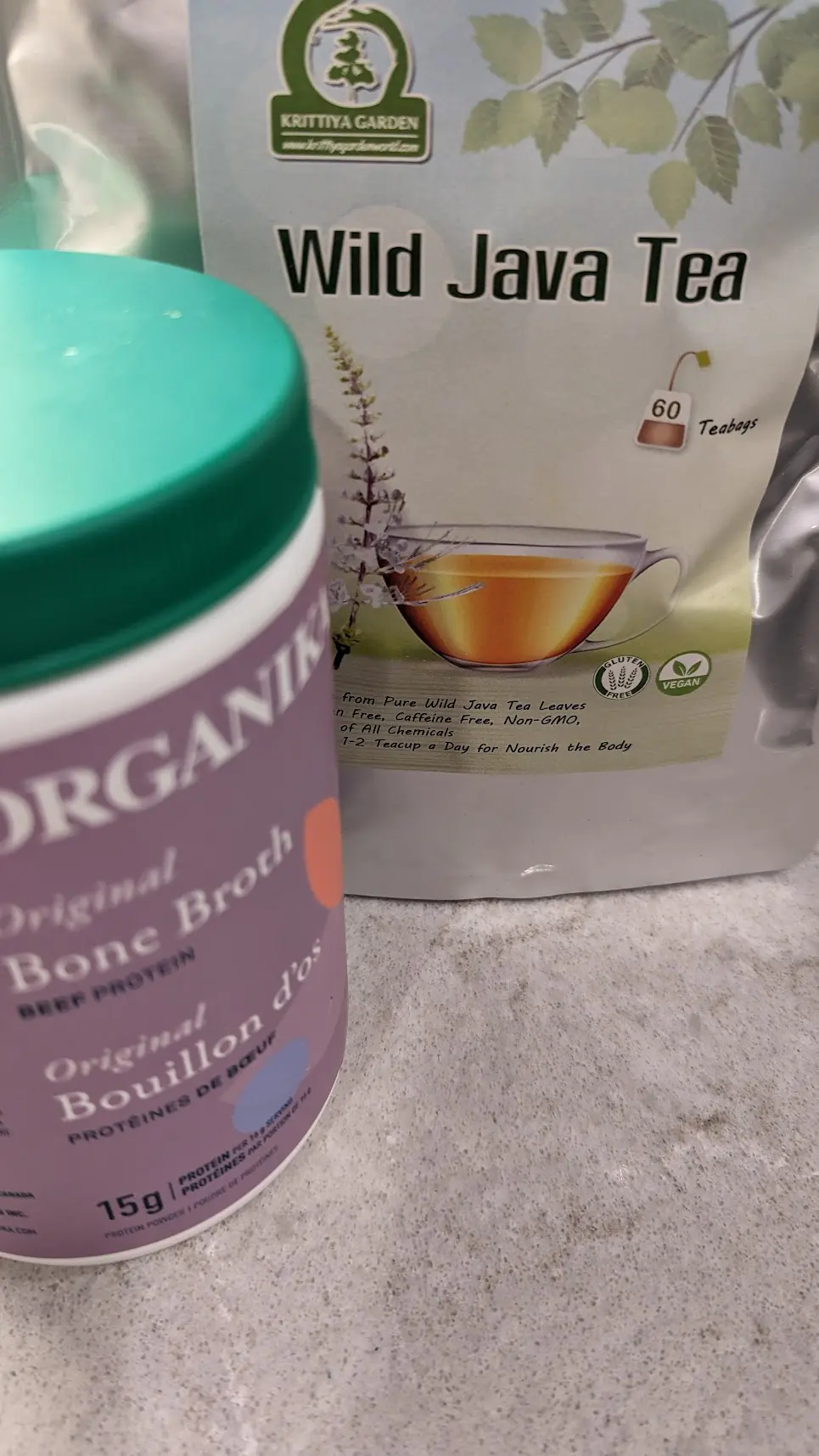
When coming out of a fast, it’s important to drink Java tea for a month to help your kidneys function, due to the heavy burden on them. In the summer or autumn, you can eat watermelons, which is the perfect way to break a fast.
From my experience, Java tea is a very enjoyable tea that does not have caffeine. It reminds me of a blend of black and green tea flavor-wise. You can definitely sense the diuretic effect of it. This is a tea that will help you urinate (for beginners) when you are having trouble in the first days after breaking a dry fast and refeeding. By adding a little bit of honey, remember to keep sweetness low, it really becomes a treat at the end of the day. Some people might not want to add it because they want to enter ketosis while sleeping, but remember that during the first week of refeeding, your goal is to continuously provide small amounts of calories to signal to your body that you are not in the fasted state anymore, and to rev up your metabolism. The end of the day is tough, this is where your willpower is tested. You want to go to bed and allow your body to rest, digest, and heal so that you can continue the refeed the next day. Since Java tea is a diuretic, you must remember to drink water and keep hydrating throughout the day. You want your urine to be almost clear when you are peeing.
I drank Java tea for the first 7 days of my refeed. Even though my refeed continued for another 11 days of mindful eating, small portions, and supplements, I did not want to continue the Java tea because the diuretic effect was getting pretty annoying. After 7 days I felt my organs were back on track, but this may not be the case for everyone. I have a lot of experience under my belt, but it's important to remember that when beginners fast, or even intermediate fasters get to their first 7+ day dry fast, things need to be taken into consideration. If you were extremely sick, old, and/or had organ issues, then you have to refeed even more carefully. Java tea may be necessary if you continue to have trouble urinating. I believe that the 30-day recommendation by Filonov is excessive though. If you have kidney pain that continues during the refeed, how are we supposed to know that the Java tea is actually helping the kidneys, or maybe you are allergic? Feel free to stop the Java tea, and try other herbal teas. If nothing changes, go back to the Java tea if you want.
Overeating in the first days after a dry fast
Overeating in the first days after fasting. If, however, this happens after fasting and you have overfilled your stomach, you must induce vomiting and flush the stomach. Then resume the withdrawal in the usual manner. If you overeat later on, conduct a one-day fast, then continue to withdraw using proper foods.
If you feel discomfort during or after eating – stomach pain, dry mouth, or reluctance to keep eating it – stop eating this food.
If you don’t feel the taste of food while chewing or if it tastes like cotton, it means that your stomach isn’t ready to digest it. You don’t need this food, so wait for a few days before trying it again.
It is so easy to overeat during the first few days after a dry fast. It's quite scary. You will be fighting with a primal urge to eat. Your instinct, your brain, and every cell in your body will be screaming at you to go all out and gorge on food. You have to fight this feeling. Your body is basically saying "Let's regain all the fat you lost as fast as possible and then some!" It's up to you to show discipline and put your foot down. Instead, be aware that your immune system is severely incapacitated when you eat a lot.
It's this process that we need to be aware of the most. Sure, telling you to eat small portions so that you don't get as fat as you were before the fast might be motivation enough. But to truly understand that the healing portion of a dry fast relies on a proper refeed, and to understand the science of how overeating impacts your immune system is key. If you overeat, you will sacrifice healing. If you undereat, you will sacrifice healing. This is the scary balance that is so important. This is why you must have high-quality foods, packed with nutrients, vitamins, and minerals.
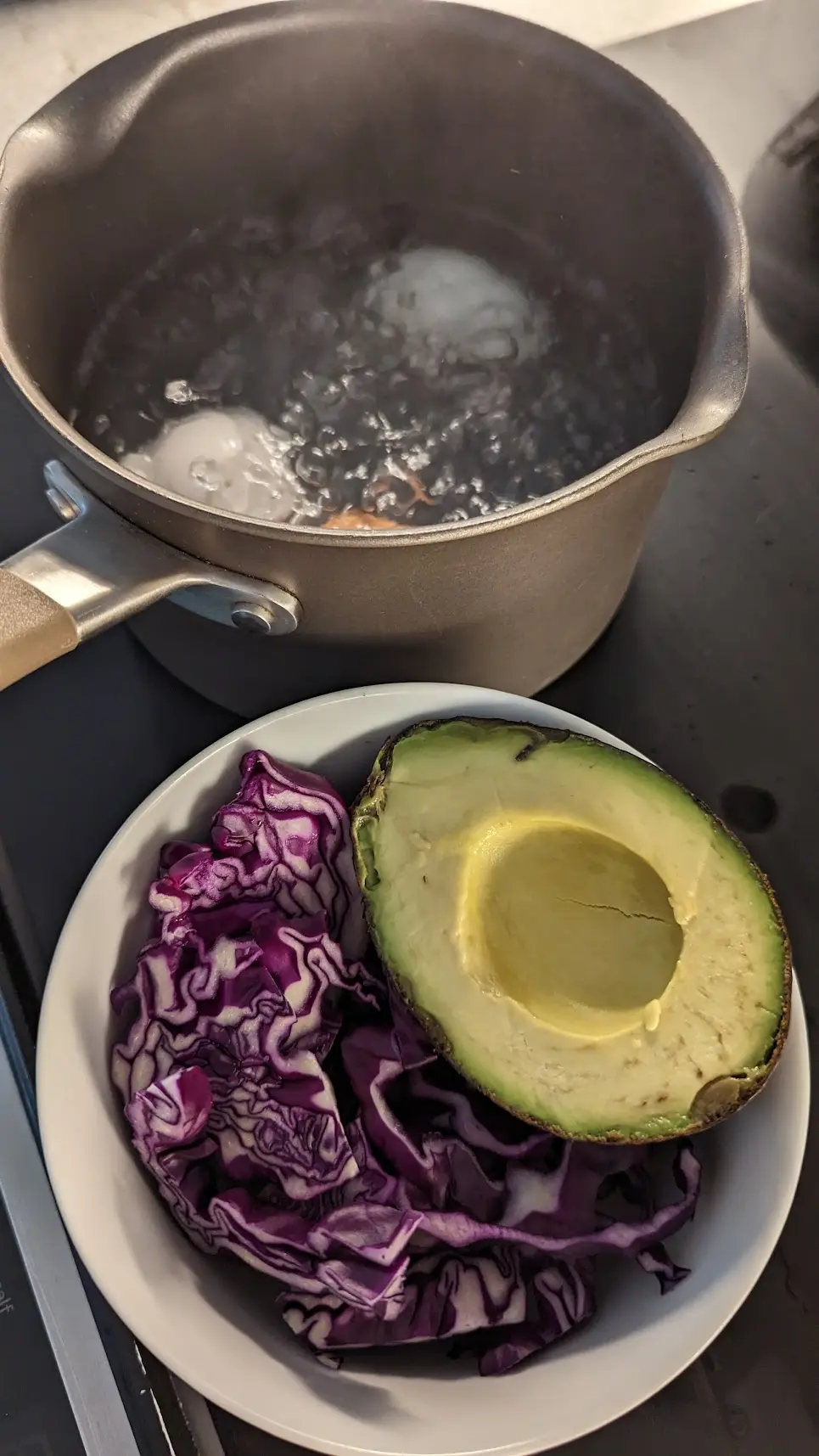
Some of the science behind overeating and immune system function:
- Energy allocation: When you consume large amounts of food, your body has to allocate a significant amount of energy to the digestive process. This includes producing enzymes, maintaining gut motility, and absorbing nutrients. Since the body has limited energy resources, this may divert energy away from immune system functions such as patrolling for pathogens or repairing damaged tissues.
- Blood flow redistribution: Digestion requires increased blood flow to the gastrointestinal system to provide oxygen and nutrients to the cells involved in breaking down and absorbing food. This increase in blood flow to the digestive organs may lead to a temporary decrease in blood flow to other parts of the body, including areas where immune system cells are actively working, potentially limiting their ability to effectively combat infections or heal wounds.
- Inflammation: Overeating, particularly foods high in fat, sugar, or processed ingredients, can lead to low-grade inflammation in the body. Inflammation is an immune response that can be beneficial in acute situations, but chronic inflammation can overwork the immune system and impair its ability to function optimally.
- Gut microbiota: The gut is home to trillions of microorganisms that play a crucial role in maintaining our overall health, including immune system function. Consuming large amounts of food, especially unhealthy or processed items, can disrupt the balance of these beneficial microbes. This disruption, known as dysbiosis, can negatively impact the immune system, making it less efficient at fighting off pathogens and promoting healing.
Step 6: Buckwheat soup and Quail eggs
The 2nd day: • 8 am – Drink herbal Java tea with honey or compote - 200 11 am – Eat buckwheat soup – 250; starting on the second day, eat one raw quail egg 3 times a day on an empty stomach during the whole period of coming out of a fast 2 pm – Eat vegetable soup (cabbage, carrots, beets, onions, potatoes, dill, parsley) – 200 • 7 pm – Eat rice soup - 200 • 10 pm – Drink compote and herbal Java tea with honey - 200
Buckwheat soup confuses a lot of people. It is a popular Eastern European dish. Think of it like vegetable soup but with buckwheat inside instead of noodles or rice. It's usually eaten as a side dish, instead of potatoes or rice. Buckwheat is usually bought as a roasted grain.
I'm not 100% sure if Filonov provides roasted or non-roasted versions for his refeed protocol. Now that I think about it, it's probably better for you to go with the non-roasted version if you can find it, even though the taste will be worse.
Buckwheat is insanely healthy and beneficial, let’s look at some of its nutritional profile and why it works so well for the refeed. Keep in mind that buckwheat is a grain, and therefore has a lot of carbohydrates. For the dry fasting club refeed protocols, specifically for post-viral illnesses we try to recommend a slightly lower glycemic refeed protocol. For example, SARS-CoV-2 uses sugars to invade human cells, new study shows. It's definitely good to incorporate carbs as they are the simplest for digestion and energy right after a fast, but it's also important not to overdo it, especially when actively working on healing a post-viral issue that may still be around if you believe in the persistent viral theory.
Values are for 100g of raw buckwheat:
| Nutrient | Amount |
|---|---|
| Calories | 343 kcal |
| Protein | 13.25 g |
| Fat | 3.4 g |
| Carbohydrate | 71.5 g |
| Fiber | 10 g |
| Sugars | 2.6 g |
| Calcium | 18 mg |
| Iron | 2.2 mg |
| Magnesium | 231 mg |
| Phosphorus | 319 mg |
| Potassium | 460 mg |
| Sodium | 1 mg |
| Zinc | 2.4 mg |
| Copper | 1.1 mg |
| Manganese | 1.3 mg |
| Selenium | 8.3 mcg |
| Thiamin (Vitamin B1) | 0.1 mg |
| Riboflavin (Vitamin B2) | 0.43 mg |
| Niacin (Vitamin B3) | 7.02 mg |
| Vitamin B6 | 0.21 mg |
| Folate (Vitamin B9) | 30 mcg |
| Vitamin E | 0.9 mg |
| Vitamin K | 14.7 mcg |
You can see that buckwheat packs a punch in terms of magnesium, phosphorus, and potassium. All 3 electrolytes are insanely vital to the post-fast refeed. It's arguably a source of vitamin B, but as the dry fasting protocol refeeds suggest: Nutritional Yeast is most likely a better supplement.

Values are for 100g of nutritional yeast:
| Nutrient | Amount |
|---|---|
| Calories | 325 kcal |
| Protein | 49 g |
| Fat | 4 g |
| Carbohydrate | 33 g |
| Fiber | 16 g |
| Sugars | 5 g |
| Calcium | 29 mg |
| Iron | 5 mg |
| Magnesium | 160 mg |
| Phosphorus | 1213 mg |
| Potassium | 2000 mg |
| Sodium | 70 mg |
| Zinc | 20 mg |
| Copper | 0.6 mg |
| Manganese | 0.4 mg |
| Selenium | 46 mcg |
| Thiamin (Vitamin B1) | 4 mg |
| Riboflavin (Vitamin B2) | 3.9 mg |
| Niacin (Vitamin B3) | 25 mg |
| Pantothenic Acid (B5) | 1.1 mg |
| Vitamin B6 | 3.3 mg |
| Folate (Vitamin B9) | 2340 mcg |
| Vitamin B12 | 44 mcg |
Please note that these values may vary slightly depending on the specific brand or source of nutritional yeast. Some brands fortify their nutritional yeast with additional vitamins, particularly B12, so it's important to check the label for exact nutritional information.
Quail eggs and substitutes
you must drink one quail egg 3 times a day from the second day of fasting (do not be afraid – quail do not get salmonellosis) on an empty stomach. This is required because quail eggs contain the whole periodic table, and most importantly, natural stem cells, which the body needs so desperately after a dry fast. Women can do facial masks: mix quail eggs with cedar oil, apply overnight for 20 minutes.
As Dr. Filonov suggests quail eggs, I tried to procure some. I realized that it's quite difficult to get, and they can be very pricey. I'm lucky to have a few local suppliers in the area, but I don't think people living in cities will have such an easy time. I tried to think why Filonov wants us to eat quail eggs. Yes, they are very healthy and his reasoning is that they contain natural stem cells. obviously, scientifically this doesn't make sense, because these are not mammalian stem cells, so you can't eat them thinking that they will directly benefit you as a stem cell. What can be meant by this is that eggs are the basis of life. They contain everything essential for their own stem cells to function and grow a chicken or quail. This means that the building blocks there are what will provide you with nutrients to feed your body as it repairs itself.
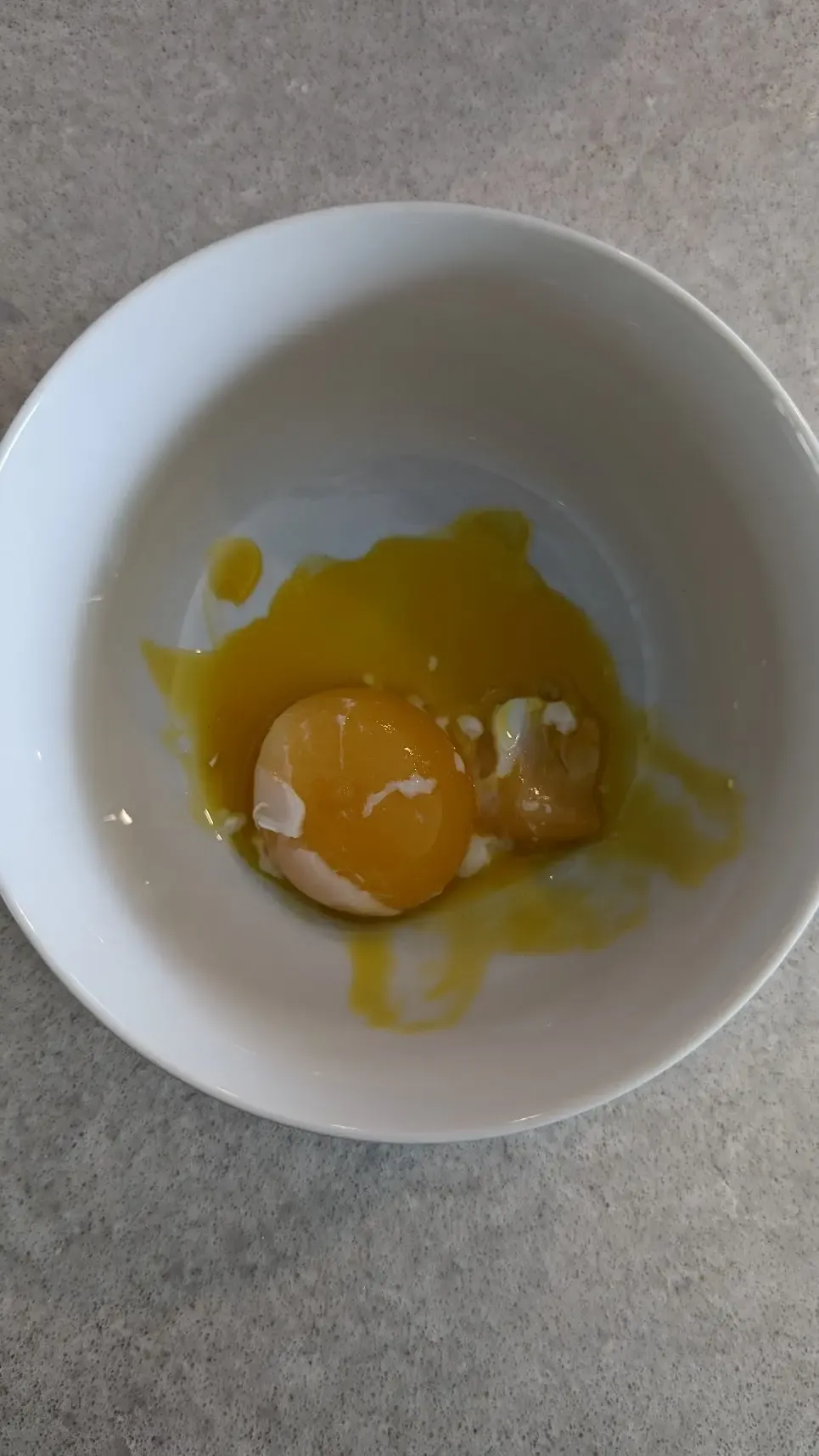
Filonov states that you can't get Salmonella from Quail eggs. This is unverifiable, and most likely untrue. Quail eggs may have a lower risk of contamination due to several factors, such as differences in the environment they are raised in, their smaller production scale, or specific breeding practices. But the concept of Salmonella is an important thing to consider. That's why I recommend eggs, no matter if chicken or quail, but also to soft boil them. if you place the eggs into boiling water for 4.5 or 5 minutes, you should be able to get eggs that have a runny yolk in the middle. During the first few days of the refeed, make sure to eat the yolk, and feel free to skip the white. This is because we are doing portion control, and very digestible foods first. The yolk is where all the nutrients are located, and the white can be skipped for the first 2 days until you start ramping up protein intake.
Here is a table comparing the nutritional content of chicken eggs and quail eggs per 100 grams:
| Nutrient | Chicken Eggs (100g) | Quail Eggs (100g) |
|---|---|---|
| Calories | 143 | 158 |
| Protein | 12.6g | 13g |
| Fat | 9.5g | 11g |
| Saturated Fat | 3.1g | 3.6g |
| Cholesterol | 372mg | 844mg |
| Carbohydrates | 0.7g | 0.4g |
| Fiber | 0g | 0g |
| Sugars | 0.4g | 0.4g |
| Calcium | 56mg | 64mg |
| Iron | 1.8mg | 3.7mg |
| Magnesium | 12mg | 34mg |
| Phosphorus | 198mg | 226mg |
| Potassium | 138mg | 132mg |
| Sodium | 142mg | 141mg |
| Zinc | 1.3mg | 1.6mg |
| Copper | 0.1mg | 0.4mg |
| Manganese | 0.03mg | 0.2mg |
| Selenium | 53.7mcg | 31mcg |
| Vitamin A | 160μg | 156μg |
| Vitamin B1 (Thiamin) | 0.1mg | 0.13mg |
| Vitamin B2 (Riboflavin) | 0.5mg | 0.79mg |
| Vitamin B3 (Niacin) | 0.1mg | 0.1mg |
| Vitamin B5 (Pantothenic acid) | 1.4mg | 1.7mg |
| Vitamin B6 (Pyridoxine) | 0.2mg | 0.15mg |
| Vitamin B9 (Folate) | 47μg | 66μg |
| Vitamin B12 (Cobalamin) | 1.1μg | 1.6μg |
| Vitamin D | 2.0μg | 1.5μg |
| Vitamin E | 1.0mg | 0.7mg |
| Vitamin K | 0.3μg | 0.2μg |
Step 7: Bee pollen/Royal Jelly
You can gradually consume bees’ waste products, honey and pollen from the 2nd day on. Eat pollen and royal jelly during the entire period of coming out of a fast (put 1 teaspoon under the tongue on an empty stomach in the morning).
This is the first time I purchased bee pollen (as I worked my way through Filonov's refeed protocol). I really enjoyed it. It's surprisingly delicious right after a dry fast, although if you were to simply eat it normally I think most people would not like the unique taste. There is a hidden sweetness to it, and something reminiscent of b vitamins. It's common practice to put a teaspoon of pollen under the tongue. The thought behind administering it under the tongue is that it can be absorbed directly into the bloodstream through what's called the mucous membrane in your mouth.
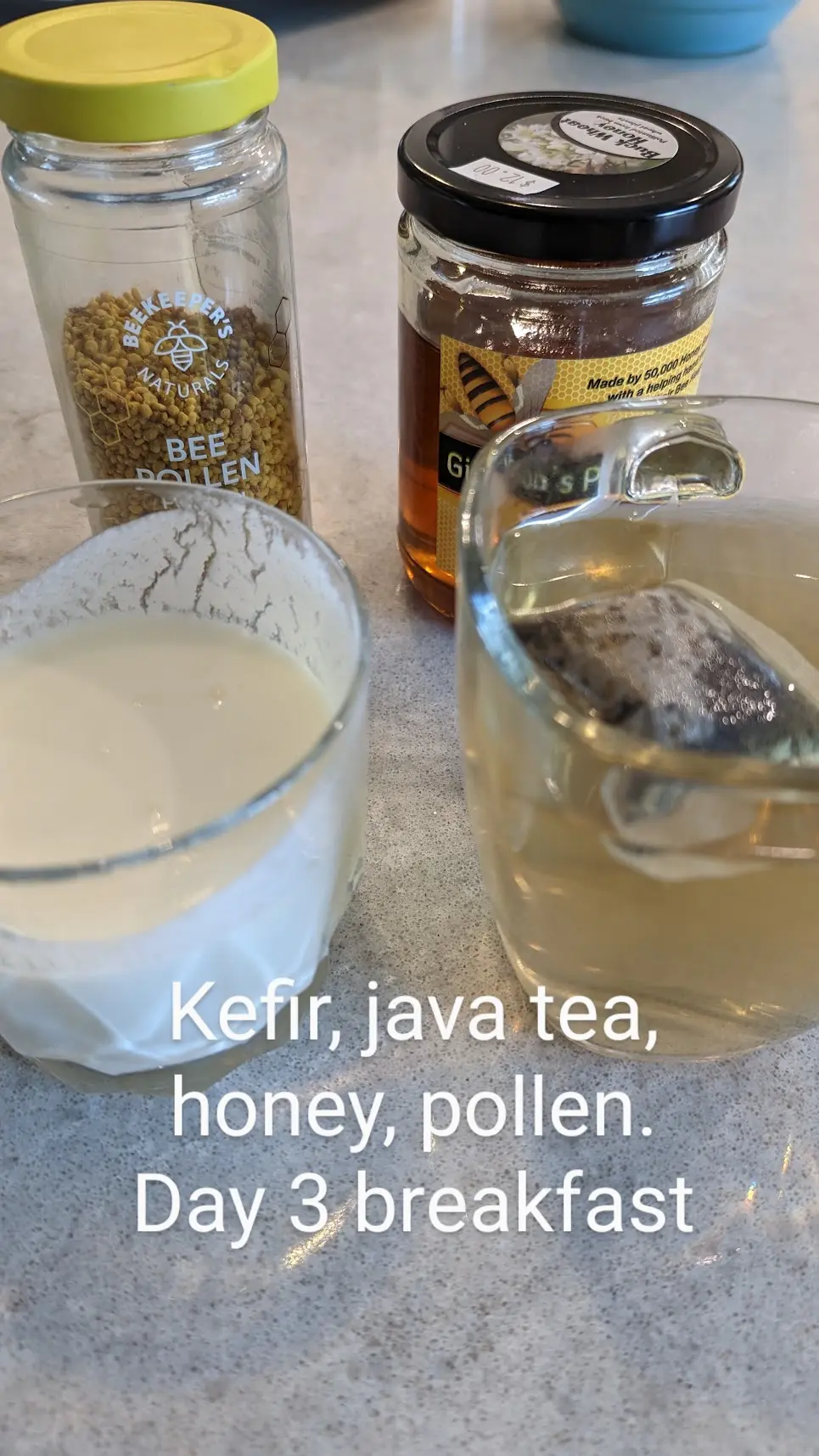
Here is a table comparing the nutritional content of bee pollen, honey, and royal jelly per 100 grams:
| Nutrient | Bee Pollen (100g) | Honey (100g) | Royal Jelly (100g) |
|---|---|---|---|
| Calories | 315 kcal | 304 kcal | 286 kcal |
| Protein | 24g | 0.3g | 13g |
| Fat | 5g | 0g | 9g |
| Saturated Fat | 1.6g | 0g | 2g |
| Cholesterol | 0mg | 0mg | 85mg |
| Carbohydrates | 40g | 82g | 8g |
| Fiber | 10g | 0.2g | 0g |
| Sugars | 30g | 82g | 6g |
| Calcium | 57mg | 6mg | 70mg |
| Iron | 7.2mg | 0.4mg | 1.4mg |
| Magnesium | 60mg | 2mg | 43mg |
| Phosphorus | 240mg | 4mg | 210mg |
| Potassium | 470mg | 52mg | 430mg |
| Sodium | 5mg | 4mg | 80mg |
| Zinc | 4.5mg | 0.2mg | 3.3mg |
| Copper | 0.4mg | 0.04mg | 0.1mg |
| Manganese | 1.6mg | 0.1mg | 1.1mg |
| Selenium | 7.4mcg | 0.8mcg | 1.2mcg |
| Vitamin A | 118IU | 0IU | 200IU |
| Vitamin C | 8mg | 0.5mg | 2mg |
| Vitamin E | 1mg | 0mg | 0.4mg |
| Vitamin K | 10mcg | 0mcg | 4mcg |
| Thiamin (Vitamin B1) | 0.7mg | 0.01mg | 0.05mg |
| Riboflavin (Vitamin B2) | 1.1mg | 0.038mg | 0.2mg |
| Niacin (Vitamin B3) | 3mg | 0.1mg | 1mg |
| Pantothenic Acid (Vitamin B5) | 1.1mg | 0.1mg | 1.2mg |
| Vitamin B6 | 0.5mg | 0.024mg | 0.1mg |
| Folate (Vitamin B9) | 55mcg | 2mcg | 25mcg |
| Vitamin B12 | 0.08mcg | 0mcg | 0.03mcg |
I really enjoyed the bee pollen as a snack in between meals. I have an intense urge to eat and it is a mental struggle each time during a refeed. The first few days are the hardest as my urge to keep eating after I finish my potion overwhelms me. Having a snack like bee pollen is nice, the idea of putting it under your tongue helps in forcing you to slow down and wait for the absorption. It seems to trick your mind, and there is a bit of a craving satisfaction that occurs. It may be due to the high nutrient profile of bee products and the body knowing this. Pollen really hits the spot after a long dry fast. I highly recommend it as long as you do not have any allergies associated with it. And if you do, you know what you need to do to get rid of them (nothing better than a dry fast for allergy re-wiring of the immune system). Nevertheless, pollen plays a key role when it comes to mental health for me, and hopefully, it helps you too. Maintaining mental health is vitally important.
Mental Health after Breaking a dry fast
Dry fasting, abstaining from both food and water, has potential health benefits, but also poses physical and mental challenges. Feelings and emotions play a vital role during dry fasting, as they can influence the body's response to the lack of nourishment. Negative emotions, such as fear and anxiety, can trigger the release of stress hormones like cortisol, while positive emotions can stimulate the release of mood-enhancing endorphins.
Mental health can be supported during dry fasting by practicing mindfulness, meditation, and engaging in activities that promote positive emotions, such as spending time in nature or doing something creative. Walking in natural settings not only increases the release of endorphins, serotonin, and dopamine but also reduces stress hormone levels. Exposure to natural light and clean air in outdoor environments can further enhance mental well-being.
Forest bathing, a Japanese practice known as "Shinrinyoku," involves spending time in forests to benefit from the therapeutic effects of nature. Research has shown that forest bathing reduces stress and anxiety levels, strengthens the immune system, and increases the number and activity of natural killer cells, which help ward off disease.
Discipline is essential during dry fasting, as individuals must resist the urge to consume food or water. Practicing discipline can also help build determination and self-control in other areas of life. Maintaining a positive mindset and staying connected with supportive friends and family members can help individuals persevere through the challenges of dry fasting.
Monitoring physical and psychological symptoms throughout the dry fasting process is important, as it can provide valuable insights into the body's response to fasting. By observing these symptoms and adjusting the fasting regimen accordingly, individuals can optimize their dry fasting experience and support their mental health.
Vitamin D levels and mental health
Vitamin D plays a significant role in mental health due to its involvement in various processes in the brain. Its main functions include regulating the production and release of neurotransmitters, promoting nerve growth, and maintaining a healthy immune system. These functions are crucial for maintaining optimal brain function and mood stability.
There is no better way to get vitamin D than to go out in the sun and have your body naturally create it. This process has evolved over hundreds of thousands of years and gives you better bioavailable vitamin D than if you were to supplement.
When sunlight touches your skin, it triggers the synthesis of vitamin D. This vitamin is then transformed in the liver and kidneys into its active form, calcitriol, which can be used by the body. Calcitriol interacts with vitamin D receptors (VDRs) found in many parts of the brain, including areas associated with mood regulation and cognition. This interaction leads to the production and release of neurotransmitters, such as serotonin and dopamine, which are essential for maintaining a positive mood and overall mental well-being.
Cofactors are substances that help enzymes work more effectively in various chemical reactions in the body. Some important cofactors for vitamin D metabolism include magnesium, vitamin K, and zinc. These cofactors play a role in ensuring that the body properly absorbs, converts, and utilizes vitamin D for its various functions.
Red light lowers cortisol
Red light therapy is a different topic. Right now I'm simply talking about using red lightbulbs instead of the normal white ones. This is something I wish I had tried during my 200-hour live-streamed dry fast. I have since purchased a few red light lights and use them before bed. The difference is very noticeable. I actually replaced the light in our toddler's room, and his time-to-nap has been reduced by about 50% (wow!).
Using red light in your room instead of normal white light can have several benefits on sleep and mood:
- Supports melatonin production: Exposure to red light at night can support melatonin production, as it has minimal impact on suppressing melatonin compared to blue light emitted by white light sources. Melatonin is a hormone that regulates the sleep-wake cycle and helps you fall asleep.
- Reduces eye strain: Red light is easier on the eyes compared to harsher white light, especially at night. It can reduce eye strain and promote relaxation.
- Decreases sleep disturbances: Red light doesn't interfere with your circadian rhythm as much as white or blue light does. By maintaining a more natural light environment in your room, you can minimize sleep disturbances and improve overall sleep quality.
- Calming effect: Red light has a calming effect on the mind and can help reduce stress and anxiety. This can be especially helpful before bedtime, creating a more relaxing atmosphere and promoting a sense of well-being.
Please read and educate yourself as much as possible about mental health and dry fasting, so that your fast is safer, healthier, and more enjoyable. Not following mental health steps can result in a harder fast, and even potential psychological damage. Don't sit in a room like I did to prove a point, it may negatively affect your mental health during and after a dry fast.

Step 7: Cabbage salad and Fish Soup
The 3rd day: • 8 am – Eat a fresh cabbage salad - 200, drink fermented milk 200 2 pm – Eat fish soup (from greenling, salmon, humpback salmon), drink tea, compote, kefir, eat honey • 6 pm – Eat boiled beets, cereals, drink tea, compote, or kefir • 10 pm – Drink herbal tea with honey
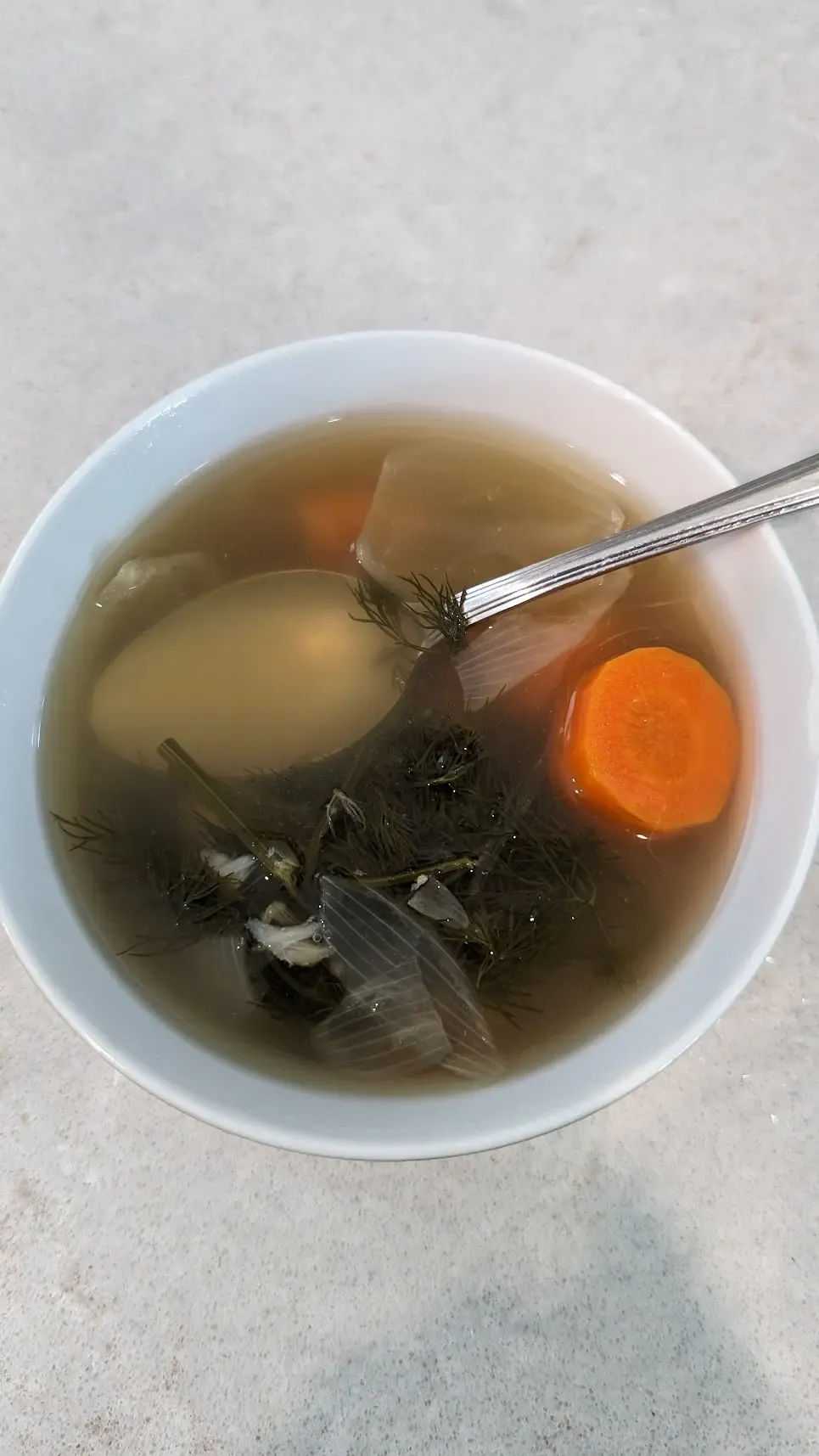
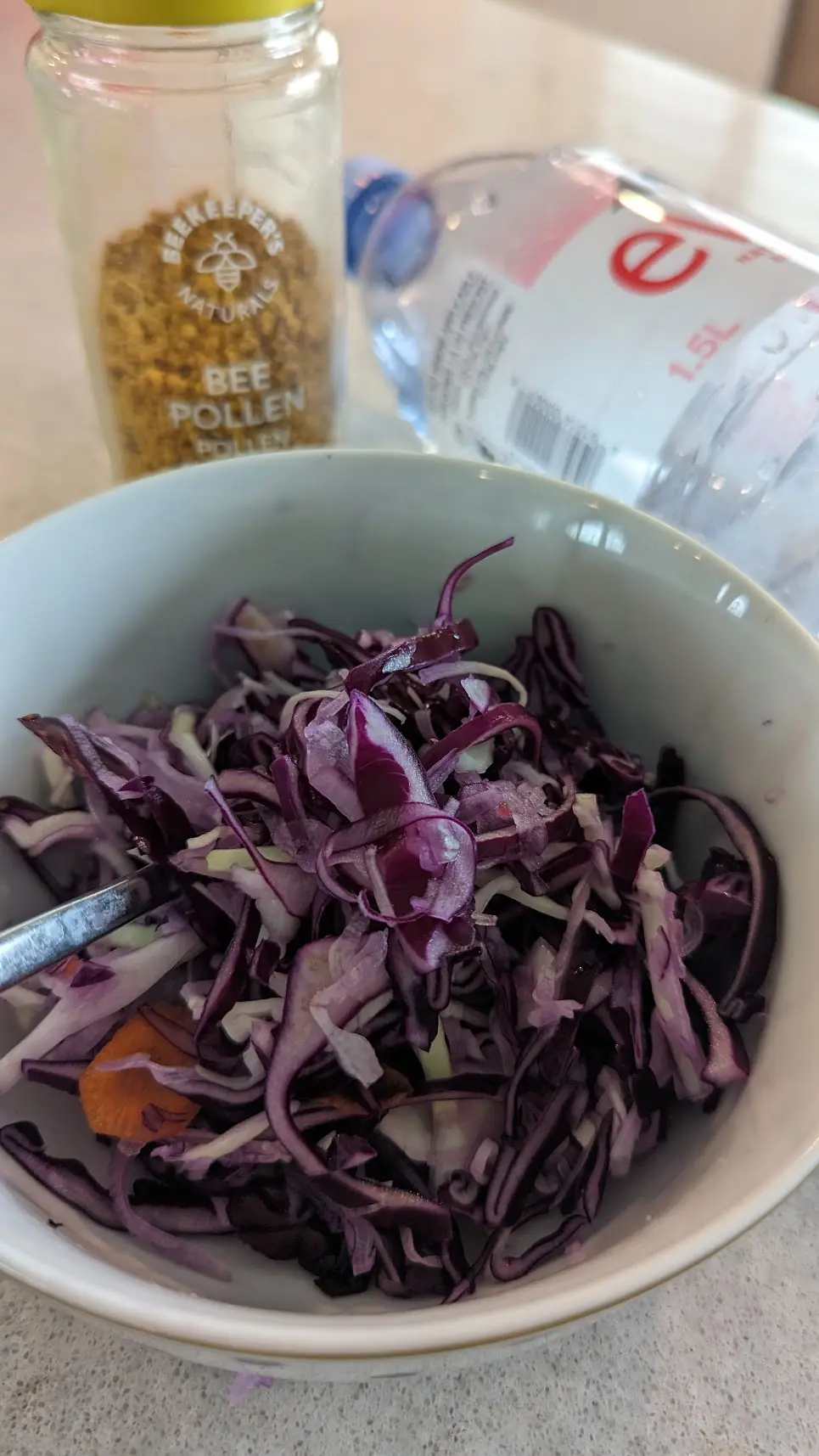
[Talk about Iodine]
Step 9: Fresh juice
The 4th day: • 8 am – Drink fresh juice, eat salads or cereals
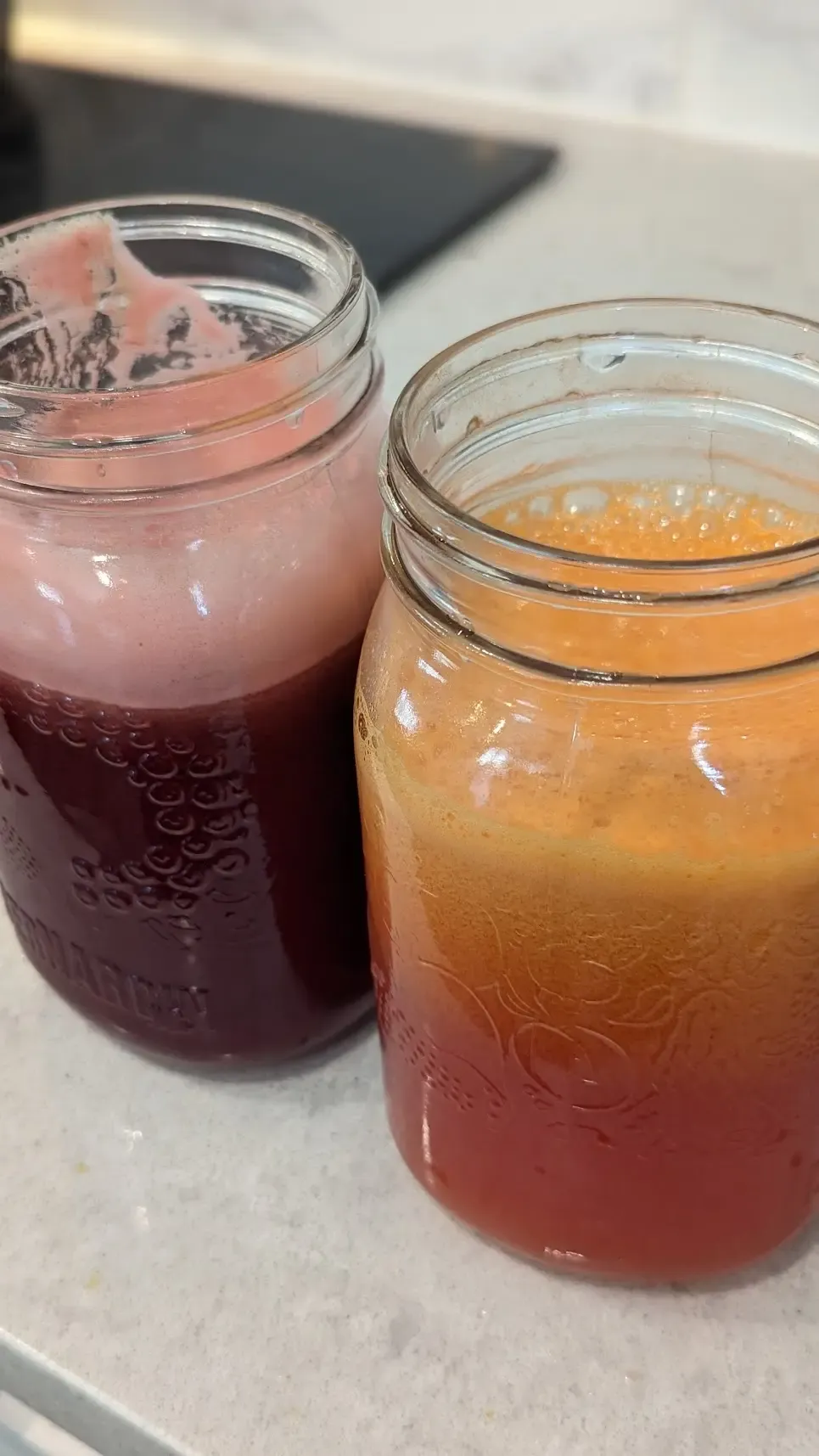
Step 10: Buckwheat porridge
The 4th day: 12 am – Eat buckwheat porridge 200, a vegetable salad • 3 pm – Eat a fresh cabbage salad - 100, fish soup, drink fermented milk 100 • 6 pm – Eat vegetable soup - 200, drink fresh juice 9 pm – Drink fermented milk 200, eat any cereal
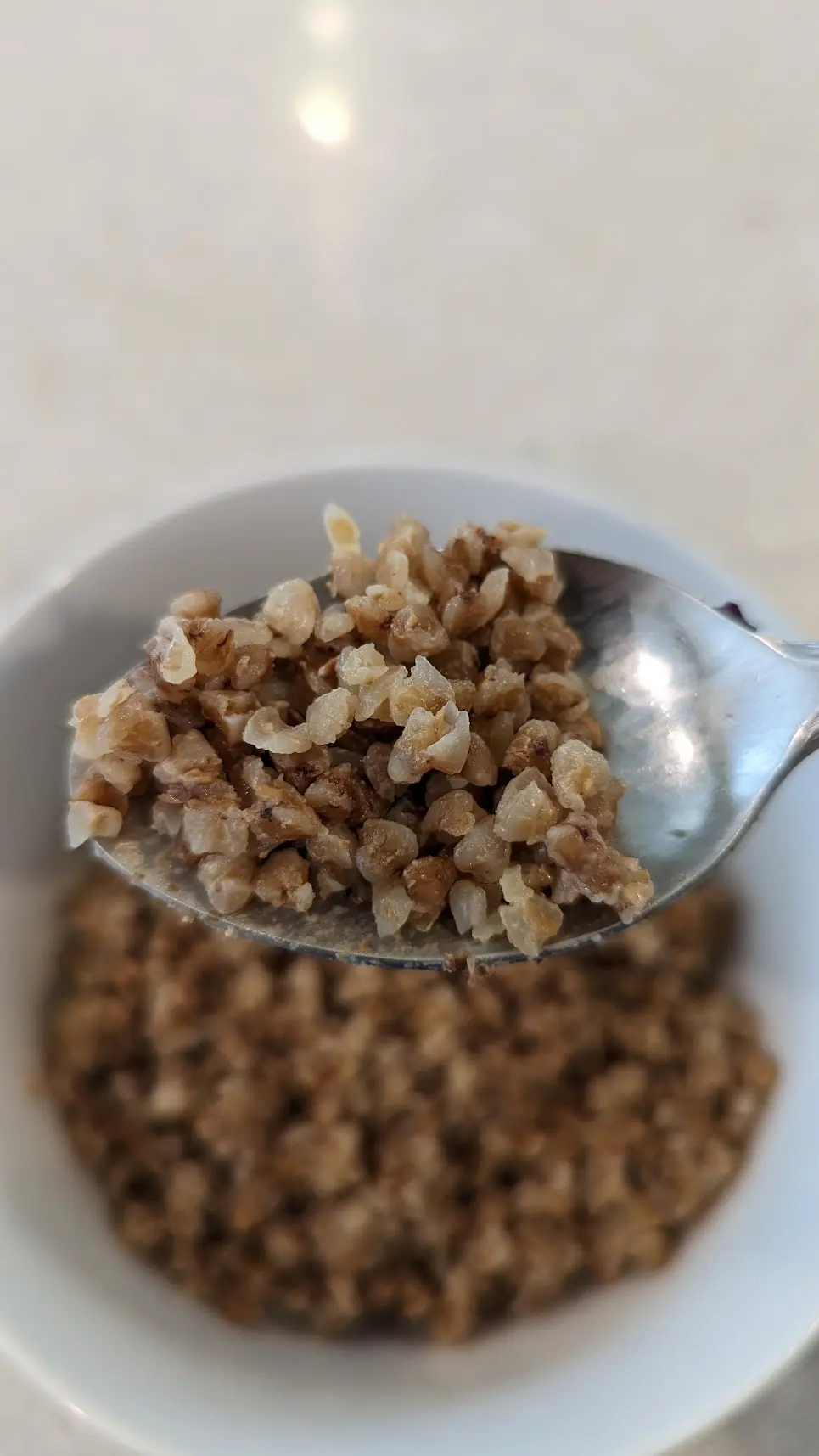
Step 11: Oatmeal, Apricots, Green Tea
The 5th day: • 8 am – Eat oatmeal with dried apricots - 150, drink green tea - 100 • 1 pm – Eat steamed vegetables (carrots, beets, cabbage) - 150, drink fresh juice - 200 • 5 pm – Eat soup (carrots, beets, cabbage, dark bread crackers or bran sticks), 1 apple, drink herbal tea with honey • 9 pm – Drink fermented milk 200, eat fresh fruits
I'm writing this as I eat the oatmeal with apricots, with green tea. It's very satisfying and delicious. The apricots were chopped up into smaller pieces, but I think I'll just cook them whole the next time. I think the flavor should remain the same. Cook the apricots inside the oatmeal, don't just add them at the end. This is important because your body has just been approved to eat fruit on this day. Fruit is full of water and easier to digest than dried fruit. Cooking the apricot releases flavor into the oatmeal and hydrating it. Releasing the flavor allows for you not to have to salt the oatmeal. Even though salt is now allowed in small amounts, you should refrain from it as long as you can.
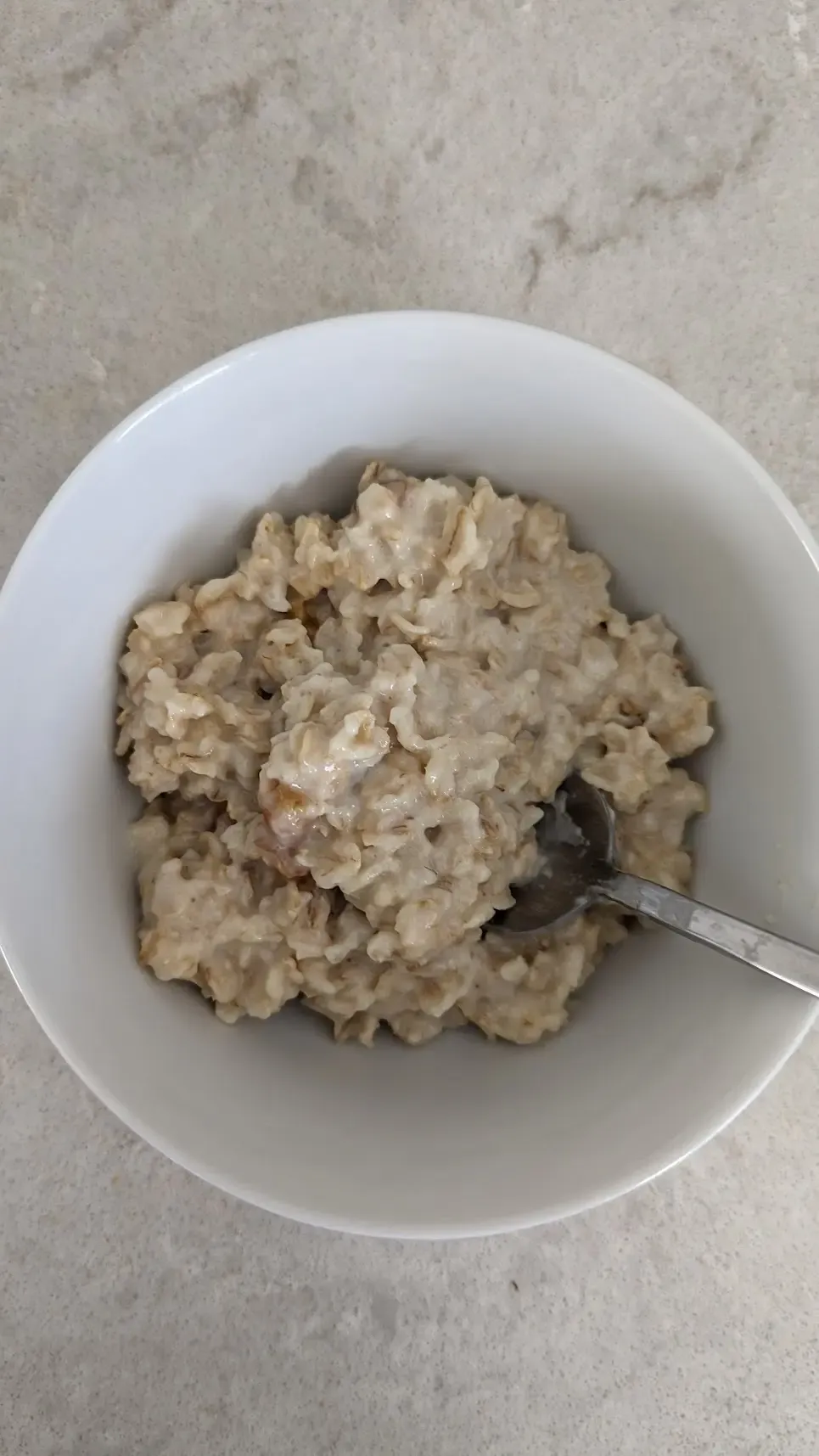
Oatmeal nutrient profile: Amazing. Oatmeal has a rich nutrient profile, offering a good source of complex carbohydrates, dietary fiber, and essential vitamins and minerals. Yes, I know it's bad for you because it's a grain (carnivore, keto, and fruitarian mindset), but take it with a "grain" of salt. The goal of dry fasting is to bring your body back to a state where it can eat anything while making sure you replenish ALL your missing stores of nutrients, vitamins, and minerals.
Here's a concise nutrient table for 1 cup (81g) of dry, uncooked oatmeal
| Nutrient | Amount | % Daily Value* |
|---|---|---|
| Calories | 300 | |
| Total Fat | 5g | 6% |
| Saturated Fat | 1g | 5% |
| Total Carbohydrate | 54g | 20% |
| Dietary Fiber | 8g | 29% |
| Sugars | 1g | |
| Protein | 10g | 20% |
| Iron | 3.6mg | 20% |
| Electrolytes | ||
| Sodium (Na) | 0mg | 0% |
| Potassium (K) | 240mg | 5% |
| Chloride (Cl) | Trace | - |
| Magnesium (Mg) | 60mg | 14% |
| Calcium (Ca) | 40mg | 3% |
| Phosphorus (P) | 180mg | 14% |
*Percent Daily Values are based on a 2,000-calorie diet.
Note the electrolytes/minerals offered by oatmeal. There's a reason it's considered a superfood and a perfect food for replenishing the body after a dry fast. Of course, like most grains, pesticides are an issue. Look for organic whenever possible. It's important to eat oatmeal with no added sugar - it's already high in carbohydrates. The fiber is the hero here, allowing your body to gently release the carbs. Phosphorus is crucial as mentioned under bone broth and eggs. Making some of these early grains a staple especially if someone is following a vegan version of refeeding. You simply can't get enough phosphorus otherwise, and it is one of the most important post-fast minerals. Iron is a bonus, but we know that plant iron is not best absorbed through grains due to phytate. (although cooking does reduce it)
Why does Filonov include Green Tea in this step? Well for starters green tea is associated with anti-aging, boosting metabolism, regulating blood sugar levels, and most importantly - caffeine. Let's not kid ourselves. The world runs on caffeine. The whole point of the fast is to make sure your body is better than when it started. It's important to introduce caffeine to the body so that if you ever want to drink some in the future, there are no unnecessary complications. This doesn't mean I support caffeine, in fact, I do believe that it is sub-optimal for humans, but that it has its place. Green tea is a great way to re-introduce it.
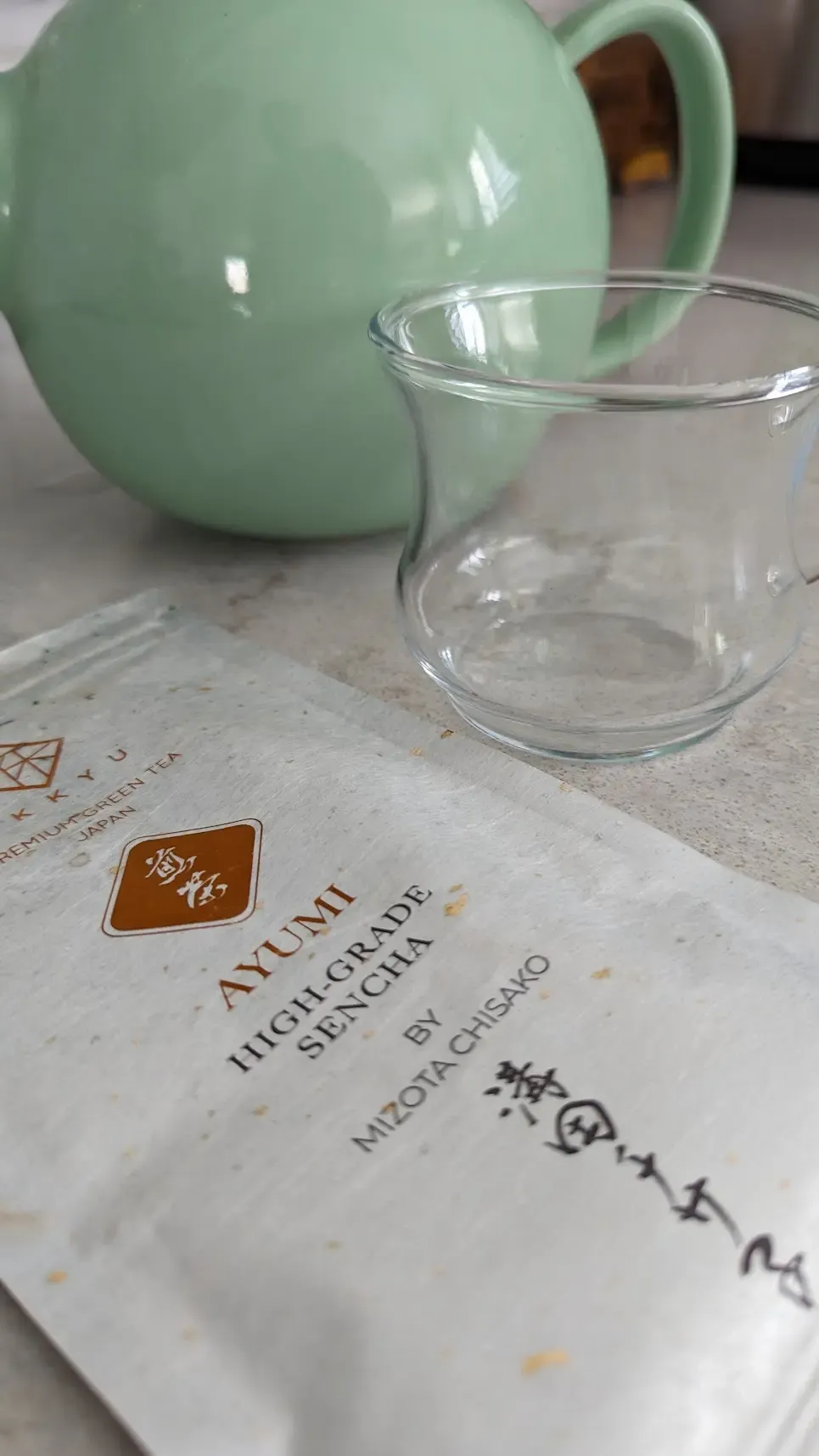
Here's a nutrient table focusing on electrolytes for 1 cup (240ml) of green tea:
| Nutrient | Amount | % Daily Value* |
|---|---|---|
| Sodium (Na) | 2.4mg | <1% |
| Potassium (K) | 21mg | <1% |
| Chloride (Cl) | Trace | - |
| Magnesium (Mg) | 2mg | <1% |
| Calcium (Ca) | 3mg | <1% |
| Phosphorus (P) | 2mg | <1% |
Green tea is not a great source of electrolytes, but what does it offer?
- Boosts metabolism: Green tea contains catechins, which help increase metabolic rate and fat oxidation, potentially enhancing the effects of fasting.
- Enhances autophagy: Green tea can promote cellular cleanup, a process called autophagy, which may slow down aging.
- Reduces inflammation: The polyphenols in green tea have anti-inflammatory properties, which may help reduce age-related chronic inflammation.
- Supports brain health: Green tea's antioxidants may help protect brain cells from oxidative stress and age-related decline.
- Improves insulin sensitivity: Green tea can improve insulin sensitivity and help regulate blood sugar levels, which is beneficial during fasting periods.
Step 12: Fruit
The 5th day: • 8 am – Eat oatmeal with dried apricots - 150, drink green tea - 100 • 1 pm – Eat steamed vegetables (carrots, beets, cabbage) - 150, drink fresh juice - 200 • 5 pm – Eat soup (carrots, beets, cabbage, dark bread crackers or bran sticks), 1 apple, drink herbal tea with honey • 9 pm – Drink fermented milk 200, eat fresh fruits
Interesting that the fruit started with is apples and apricots, followed by fresh fruits. Apple is definitely one of the powerhouse low-glycemic fruits and makes complete sense to start off the reintroduction with it as opposed to tropical sugar-heavy fruit.
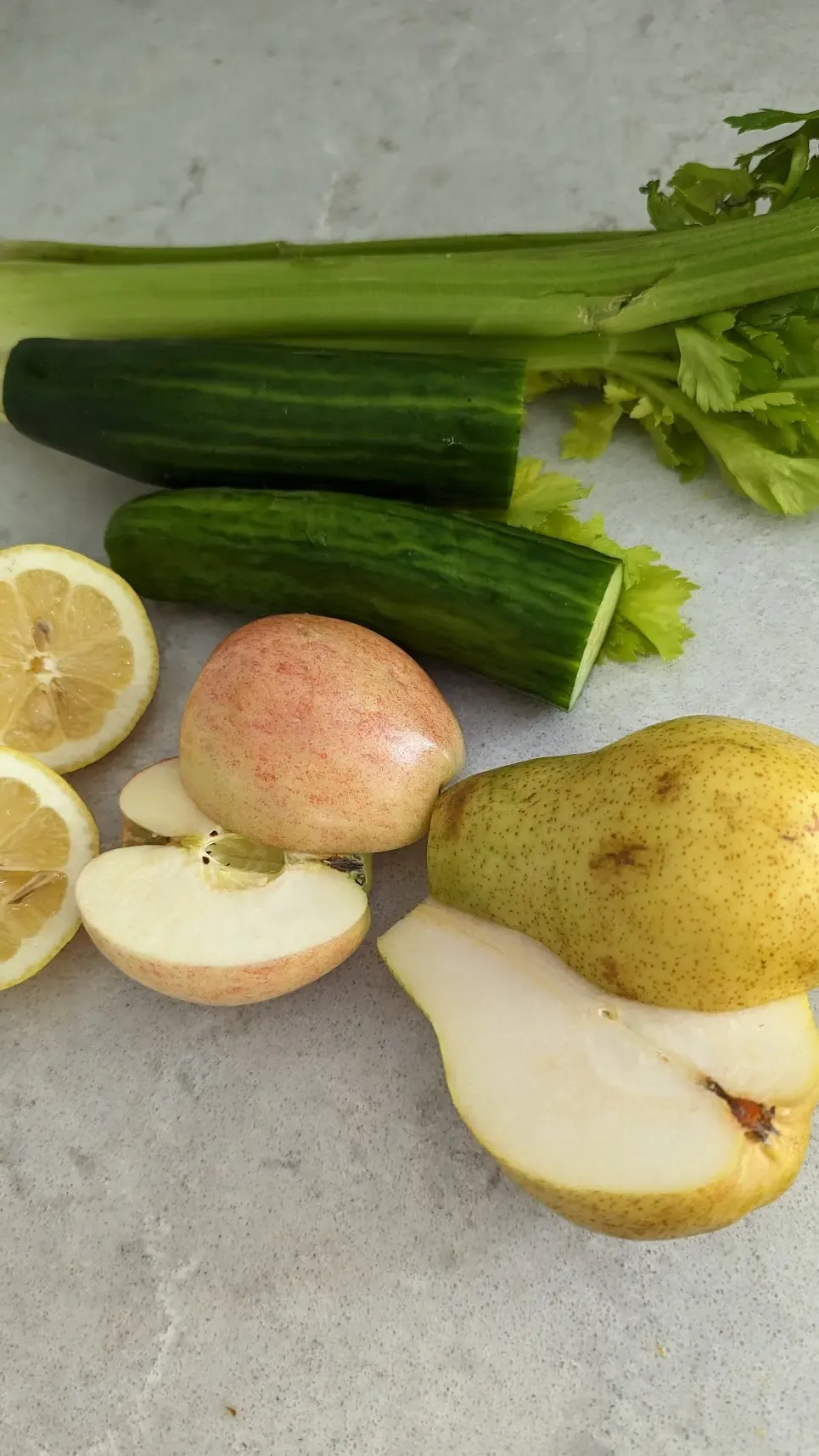
I'll have to admit that after breaking the dry fast, the large amount of pears I purchased has started to ripen. This has been a milestone for me. I may have eaten a little more than I should have. Fruit at this stage provides a lot of necessary micronutrients, vitamins, and feelings of satisfaction.
Steamed Vegetables
1pm - Eat steamed vegetables (carrots, beets, cabbage) -150, drink fresh juice -200
Step 13: Oil and Fish
The 6th day: 8 am – Eat raw grated vegetables or fruits 250 • 1 pm – Eat a vegetable salad and a vegetable soup with a piece of bread or porridge with a teaspoon of oil. Drink fresh juice - 250 • 5 pm – Eat soup (carrots, beets, cabbage, dark bread crackers or bran sticks), 1 apple, drink herbal tea with honey • 9 pm – Drink fermented milk- 200, eat fresh fruits
The 7th day: • 8 am – Eat raw grated vegetables or fruits - 250 • 1 pm – Eat 200g of lean fish cooked in any way, except for frying. Combine it with a green salad. Drink fresh Juice - 200 5 pm – Eat borscht - 250, 1 apple, drink herbal tea with honey 200 • 9 pm - Drink fermented milk - 200, eat fresh fruit
Congratulations if you've made it this far and held on to the refeed schedule. It's not something most people are able to accomplish by themselves. From people I've worked and talked with, the most common way a strict adherence to this refeed is possible, is by either going to a retreat where this is provided to you or if you have a family member/partner that helps you prepare. Otherwise, it is usually too difficult. That's why I am working on a refeeding protocol that is a little simpler, tells you what to prepare in advance, and how to manage it after you finish a fast. It's meant for those doing this at home, by themselves, or without external support.
Do you think it’s a coincidence that Filonov prioritizes fish? From an evolutionary perspective, what is the one food that has probably kept humans alive through droughts, apocalypses, and severe winters where there was nothing left to eat? Fish. Most people are deficient in omega 3, and if they’re not, then they have a disproportionate ratio of omega 6 to omega 3, which is just as bad. * Seed oil consumption. Iodine shows up again in fish and DHA. One of my most important factors of health. I’d have to rank a good omega-3 profile, vitamin D, and magnesium as my top 3. Don’t forget co-factors K2 and a few others.
Step 14: Red Wine
The 8th day: • 8 am – Eat fruit, drink herbal tea with honey - 200 • 1 pm – Eat fish baked in foil, a vegetable salad - 200, drink dry red wine half diluted with boiling water - 200 • 5 pm – Eat borscht - 250, 1 apple, drink herbal tea with honey - 200 • 9 pm – Drink fermented milk - 200, eat fresh fruits
Introduction of alcohol to the body. Once again we’re prioritizing the reintroduction of food to the body. You may not be a drinker, but it's wise to prepare the body for the future as the gut is rebalancing, to be able to interpret and deal with alcohol. Alcohol is a part of many foods like vinegar, overripe fruit, and other processes. After a dry fast, a lot of your cells are renewed and refreshed. Tolerance levels are down drastically.
With regular consumption, the liver becomes more efficient at breaking down alcohol, and the brain adapts to its presence, reducing the intensity of its effects. In essence, alcohol tolerance is the body's ability to metabolize and adapt to alcohol, resulting in the need for increased consumption to achieve the same effects.
I have to admit, I skipped this step and have not had any alcohol (I'm on day 11 of the refeed as I write this). I should probably have some red wine now that I think about it. Strictly from an introduction point of view.
Red wine, when consumed in moderation, offers a range of health benefits. Rich in antioxidants, particularly resveratrol, flavonoids, and tannins, it contributes to a healthy heart, improved circulation, and reduced risk of certain chronic diseases. Its polyphenols may also support cognitive function and help fight inflammation, while moderate alcohol intake has been associated with increased levels of HDL (good) cholesterol.
nutritional content of a 5-ounce (150 ml) glass of red wine
| Nutrient | Amount | % Daily Value |
|---|---|---|
| Vitamin B1 (Thiamine) | 0.01 mg | 1% |
| Vitamin B2 (Riboflavin) | 0.02 mg | 2% |
| Vitamin B3 (Niacin) | 0.32 mg | 2% |
| Vitamin B6 (Pyridoxine) | 0.07 mg | 4% |
| Vitamin B9 (Folate) | 4 µg | 1% |
| Potassium | 187 mg | 4% |
| Phosphorus | 24 mg | 2% |
| Magnesium | 11 mg | 3% |
| Calcium | 12 mg | 1% |
| Sodium | 6 mg | <1% |
As you can see, not a great source of vitamins and electrolytes. A decent source of potassium. But the health effects lie in the antioxidants. Nevertheless, it shows that the red wine is included similar to the green tea. Something that helps the body re-introduce a harsh, but common type of drink: alcohol, back into the body.
When to add workouts during the dry fasting refeed?
Read specifically about exercise and dry fasting here:

To keep reading this article, including more information and concluding findings and experiments, please subscribe for the free tier to unlock the rest of it. If you find this information valuable, subscribing for the paid 5$ tier will help me continue this work!




